LG OLED B4 is an exceptionally versatile device in the semi-premium category. For how else can you describe an OLED television that is so well-priced, and whose price, as history shows, will quickly drop? Perfect blacks and contrast are two things that inevitably hypnotise, and we are sure that anyone who has ever owned a device with this panel will not be able to return to LCD units. The brightness results of the TV in HDR content may seem quite low, however, in this case, due to such a panel, they will appear optically much higher. It is worth noting their stability and uniformity in practically every scene. In this case, a minor downside is the brightness of full-frame content filled with a lot of white. However, we do not consider this a serious issue, as there are not many such instances. The factory colour reproduction also deserves praise, which in our unit is quite decent, but one cannot help but recall the beneficial effect calibration had on the image, allowing the director's intentions to be conveyed in full. LG B4 will be an excellent choice for all sorts of gamers, as well as sports fans. The former will certainly appreciate the rich support in the form of all the conveniences arising from the HDMI 2.1 standard. Meanwhile, the latter will enjoy the advanced motion smoother with multi-level adjustment. And finally, it is impossible not to mention the convenience resulting from the remote control with a built-in gyroscope, which allows it to function like a mouse. The WebOS system, which we will navigate, is incredibly smooth and responsive. It offers a multitude of applications that will be more than sufficient for the vast majority of users. The heart of the LG B4 TV is the advanced Alpha processor, which is responsible for image smoothness and advanced signal analysis. In summary: who is the LG OLED B4 for? It is the perfect device for those expecting the highest possible image quality within a given budget, but not only that. The LG B4 clearly stands out from the competition at its price point, which cannot offer such high-quality image in this price range.
- Matching (Score)
- Our verdict
- TV appearance
- Where to buy
- Contrast and black detail
- HDR effect quality
- Factory color reproduction
- Color reproduction after calibration
- Smoothness of tonal transitions
- Image scaling and smoothness of tonal transitions
- Blur and motion smoothness
- Console compatibility and gaming features
- Input lag
- Compatibility with PC
- Viewing angles
- TV efficiency during daytime
- Details about the matrix
- TV features
- Apps
- Playing files from USB
- Sound
LG 55 B4 vs LG OLED B5
Direct compare
B46 / B42 / B43

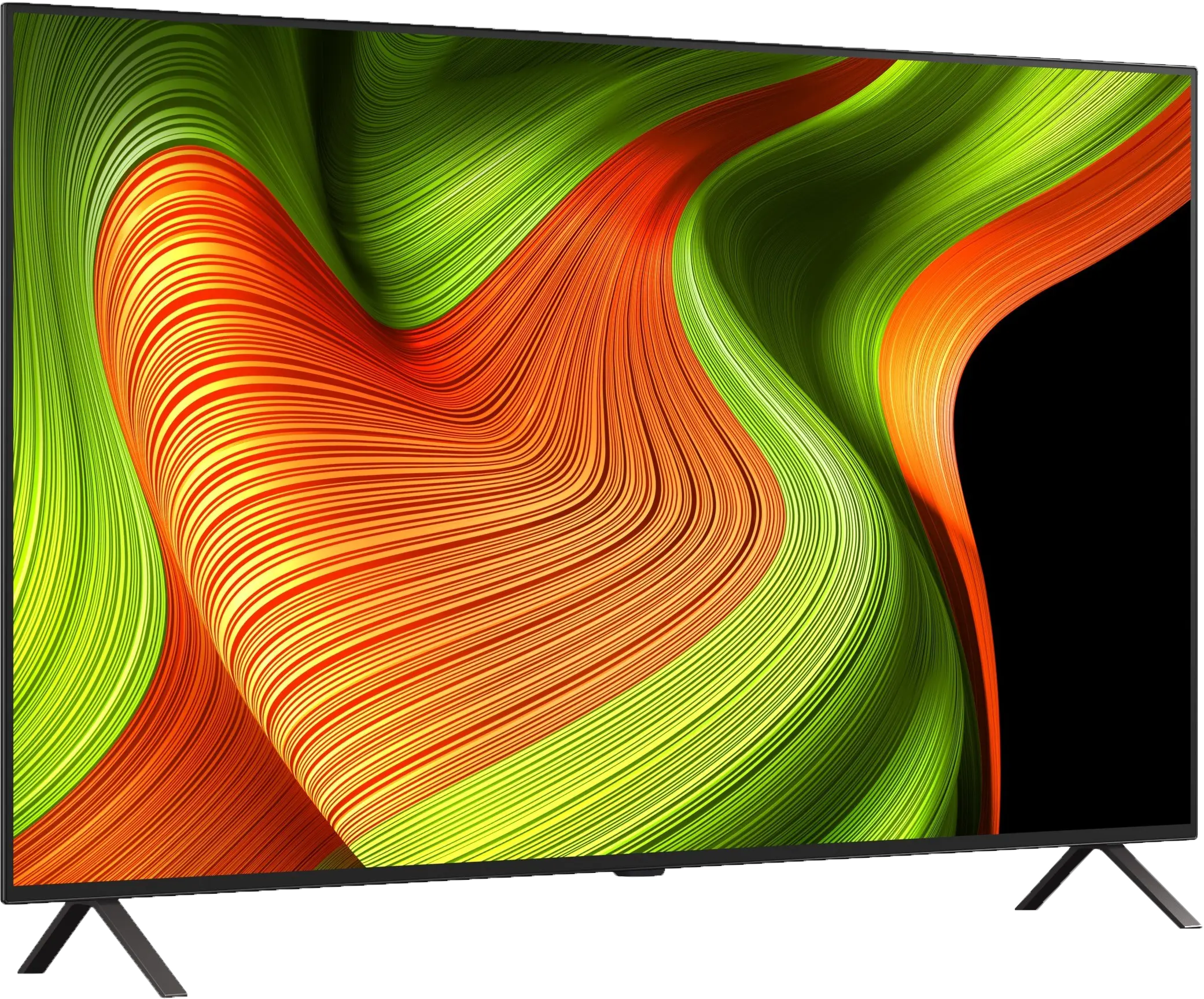
Panel type: WRGB OLED
Resolution: 3840x2160
System: WebOS
Model year: 2024
Complete the survey to find out the result

Panel type: WRGB OLED
Resolution: 3840x2160
System: WebOS
Model year: 2025
Complete the survey to find out the result

Overall rating
8.1
7.8
Movies and series in UHD quality
8.1
7.9
Classic TV, YouTube
8.8
8.6
Sports broadcasts (TV and apps)
8.6
8.5
Gaming on console
9.3
9.2
TV as a computer monitor
7.6
7.6
Watching in bright light
5.7
4.9
Utility functions
9.0
8.2
Apps
8.7
8.7
Sound quality
7.1
7.0
Complete the survey to find out what fits your preferences
Advantages
Reference colour reproduction after calibration
Very good image compliance with the director's intentions
Excellent compatibility with consoles and PCs
Advanced motion smoothing system
Deep and vivid image
Developed WebOs system and "mouse" remote
Perfect black and contrast
Pleasant HDR image
Excellent colour reproduction capabilities
120Hz OLED panel - great motion smoothness
4 HDMI 2.1 ports and full support for gamers (VRR, ALLM, Dolby Vision Gaming, HGiG)
Very low input lag
Proper content scaling and good digital processing
Convenient webOS system with Magic remote
Built-in USB recording function from the built-in DVB-T/T2 tuners
Disadvantages
Visible tonal transitions
Average brightness and poor performance in bright rooms
No support for DTS formats
Different versions of the remote in derivative models – hard to predict which version we will get
Our verdict
LG B5 is a really good OLED TV that shows you don’t need to spend a fortune for very good quality. It offers deep blacks typical of organic panels, very good colour reproduction – especially after calibration – and pleasant HDR movie watching experiences. All of this makes for evening screenings that can deliver cinematic emotions even without reaching for much more expensive screens. The fluidity of the image and the set of features for gamers also deserve recognition. The 120 Hz panel, low input lag, full support for HDMI 2.1, variable refresh rate, and Dolby Vision Gaming mode make the B5 a very versatile screen – great for both gaming and watching sport. The friendly webOS system, along with the Magic remote, provides convenient access to content and makes operation easier. However, not everything is perfect. Compared to the B4 model, there is a slight drop in brightness, especially in very bright rooms. For some users, the lack of DTS audio support may also pose a problem, which could necessitate some workarounds when connecting Blu-ray players. Still, LG B5 remains one of the most sensible choices for those looking to step into the world of true cinema – without overpaying, but also without making major compromises. It’s a screen that doesn’t need to prove anything – it simply delights the eye with great picture quality and works as it should.
TV appearance




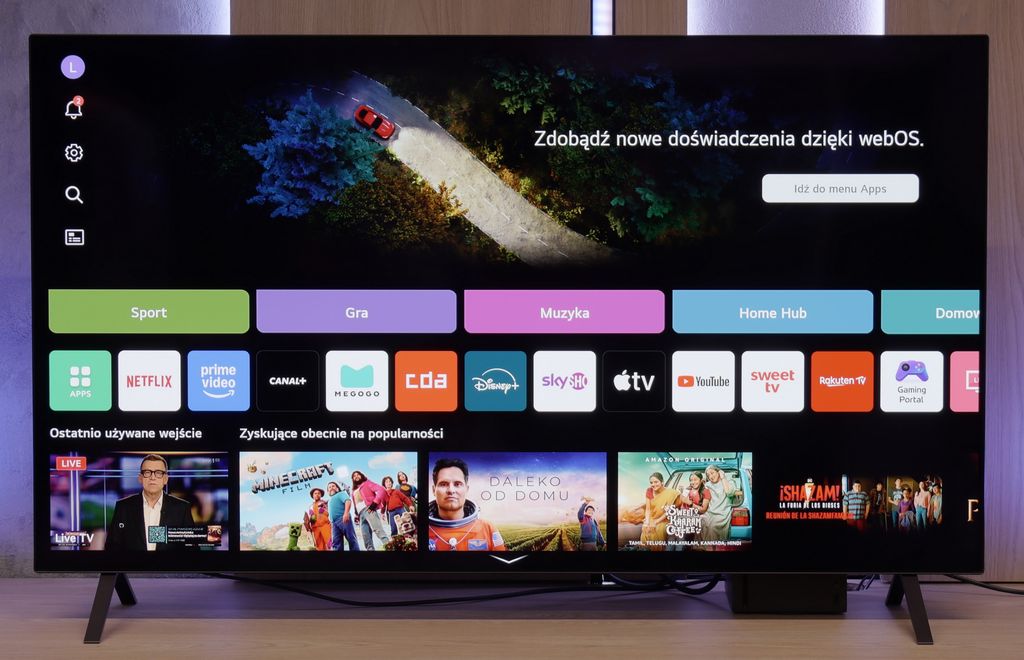
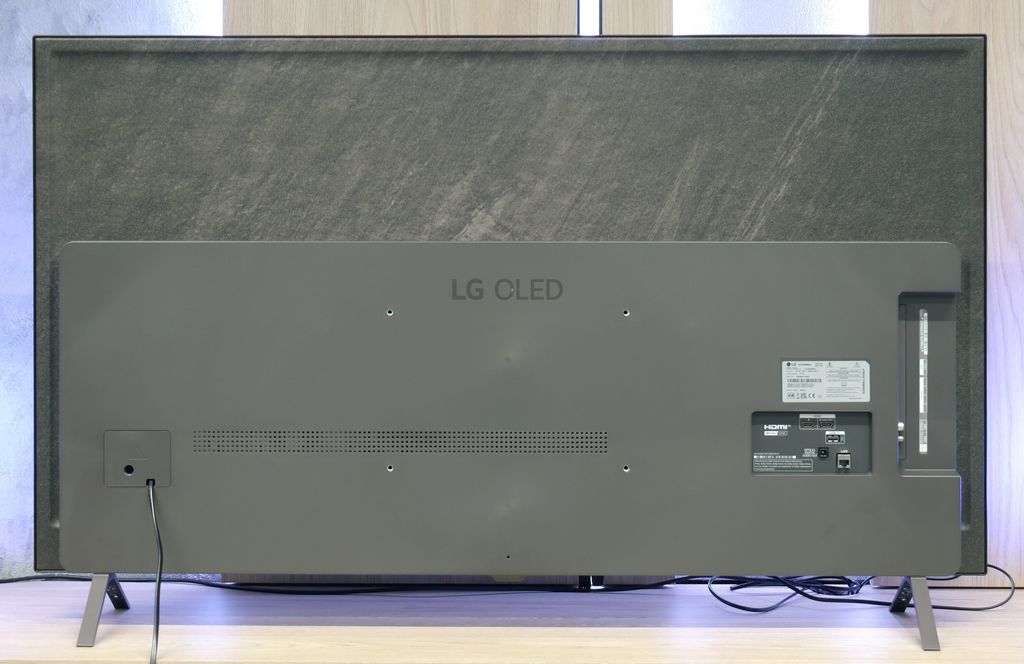

Contrast and black detail
10/10
10/10
Contrast:

Result
∞:1

Result
∞:1

Result
∞:1

Result
∞:1

Result
∞:1

Result
∞:1

Result
∞:1

Result
∞:1

Result
∞:1

Result
∞:1
Halo effect and black detail visibility:


LG B4 uses OLED panels produced by LG Displays. The use of this type of panel gives us perfect contrast and black levels. Thanks to these conditions, the image is incredibly three-dimensional, almost as if it were three-dimensional. The manufacturer's series with the letter "B" has always been the ideal solution for those seeking very good image quality while not wanting to pay extra for features that are only available in higher series. Therefore, these models have been somewhat of a dark horse in this price range, as their competitive pricing primarily allowed them to compete with Mini LED televisions. It’s not hard to say that these models have won these battles due to the absence of characteristic flaws found in LCD receivers with multi-zone backlighting, such as blooming/halo effects or dimming of images with fine bright details. And as we can see in the test scenes from the films "Oblivion" and "Sicario 2," the image quality stands at the highest level. Looking at the first one, we see a spectacular play of lights that, despite their brightness, are perfectly separated from each other. Even the more difficult scene with the helicopter poses no problem for LG B4, showcasing a wealth of detail and the specific colour grading characteristic of this title.
If you're looking for changes compared to last year's LG B4, we’ll clear up any doubts straight away – you won’t find any in this category at all. And that’s a good thing. Because how do you improve something that is already close to perfection? The LG B5, as a WOLED organic panel television, offers black scenes as dark as tar and contrast that’s hard to find even in the most expensive LCD screens. The screen is as clear as a bell – no bleeding, no streaks, no halo effects that can ruin the atmosphere in cinematic scenes. Here, everything is in its place. Details separate from black with surgical precision, nothing blurs together, even in the most demanding sequences from films like The Revenant or Oblivion. This is the type of television that can truly enchant you, especially when the room goes completely dark. When the lights go out, the LG B5 takes centre stage – and it does so wonderfully. In these conditions, OLED shines the brightest, and even top-end LCD models – despite advanced dimming and hundreds of zones – simply fall behind.
HDR effect quality
6.3/10
6.2/10
Luminance measurements in HDR:

Result
664 nit

Result
650 nit

Result
677 nit

Result
662 nit

Result
410 nit

Result
587 nit

Result
593 nit

Result
628 nit

Result
589 nit

Result
470 nit
Scene from the movie “Pan” (about 2800 nits)

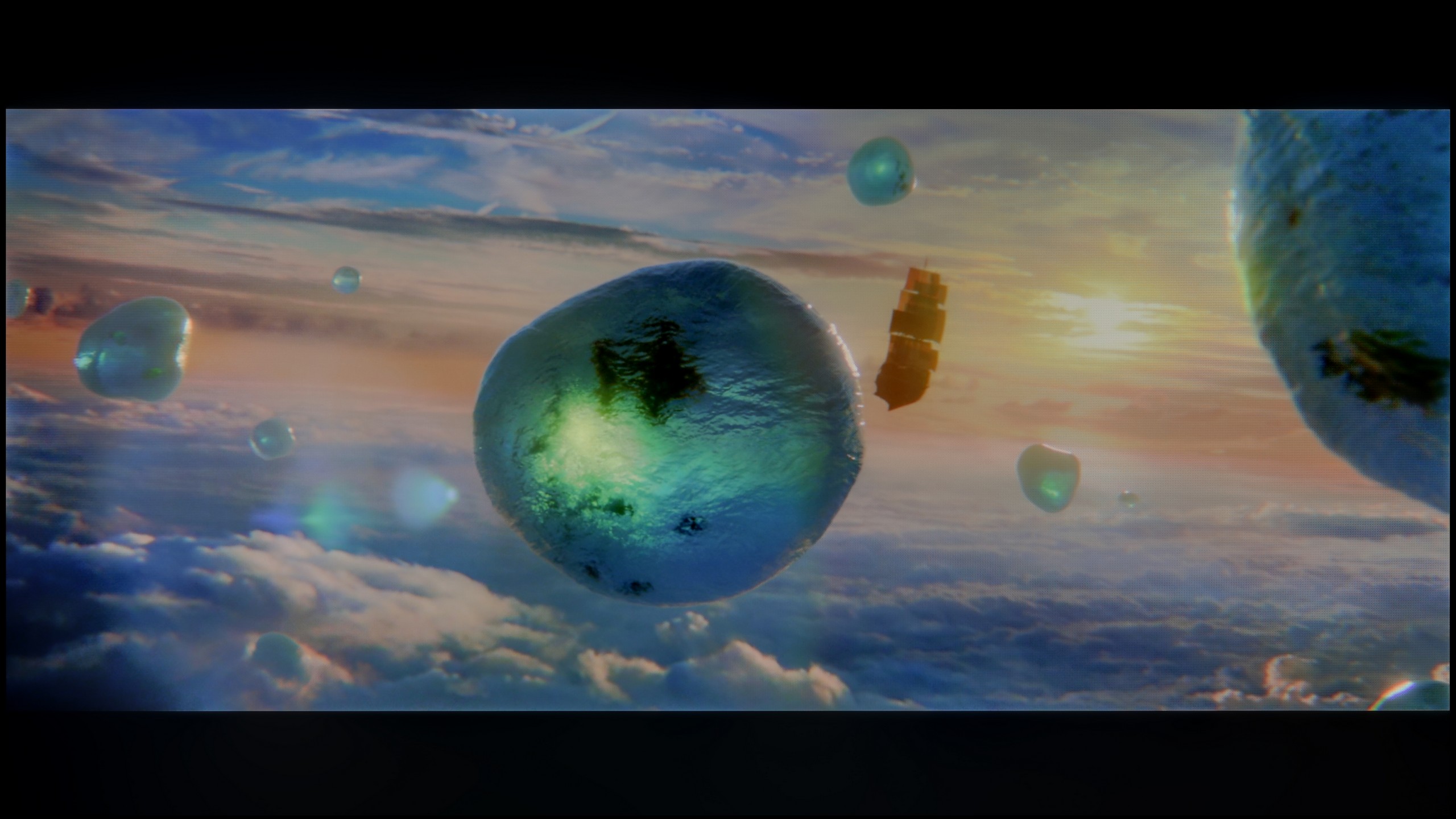
Scene from the movie “Billy Lynn” (about 1100 nits)


Static HDR10


Dynamic: Dolby Vision
Dynamic: Dolby Vision


HDR luminance chart:
LG OLED B5
Luminancja HDR
Luminance of RGB colors
LG 55 B4
Luminancja HDR
Luminance of RGB colors
The brightness results in HDR materials LG B4 are very good. It is true that none of them exceed 1000 nits, although the luminance stability is excellent and looks practically the same in every scenario. The only moment where the tested television performs worse is the last scene, although this should not come as a surprise. Large frames filled with a lot of white have always been, and will likely continue to be, somewhat of a weakness for OLED televisions. However, the combination of perfect contrast, black levels, and brightness in the LG B4 allows for a full spectrum of the HDR effect. Additionally, the incredibly high coverage of the DCI-P3 colour gamut, which reached 99%, deserves recognition. As a result, colours look incredibly vibrant and stunning.
LG B5 is a moderately bright OLED TV. Regardless of the scene – it can generate about 500 nits of peak brightness. And interestingly, it does this even in full-screen shots flooded with white, where most OLEDs usually struggle. So, is this screen suitable for HDR films? Yes – absolutely, because such brightness really allows you to feel the magic of HDR effects. However, it’s worth noting that compared to last year's B4 model, the new B5 is darker – by about 100 nits. It may seem like a small amount, but at such average peak values, it makes a significant difference. Fortunately, the TV makes up for it with another strength – excellent coverage of the DCI-P3 and BT.2020 colour gamuts. This means HDR films look truly vibrant, lively, and impressive even in more demanding scenes.
Factory color reproduction
8.4/10
8.2/10


Factory Mode
After calibration


Factory Mode
After calibration
The best factory mode prepared by the manufacturer is "Filmmaker," and we used it throughout the entire testing procedure. We must admit that the unit we received straight out of the box had quite decent colour reproduction. The biggest issue in both SDR and HDR content turned out to be white balance. In the former, there was a strong dominance of red, resulting in a noticeable yellow tint in the displayed image, particularly evident on skin tones and whites. In high-quality materials, this colour was also pronounced, but due to a lack of blue, there were also signs of green visible. Besides these shortcomings, we also encountered issues with greyscale and the colours themselves.
B5 was tested in Filmmaker mode and… we’d love to see more TVs like this right out of the box. Seriously. The white balance is very well set – there’s practically nothing to nitpick. Well, if you really want to, you might notice a slight deficiency in blue, which can make the overall picture have a slightly yellowish tint. But that’s just our editorial nitpicking. Most of you probably won’t even notice. We also have minimal reservations about brightness management in HDR format. The EOTF curve – which is responsible for how the TV distributes brightness across the scene – sits just below ideal. In practice, it may happen that the darkest parts of the image appear too dark and simply… disappear. But these are details that only come out in measurements. Generally: we are impressed. But we also know that LG TVs respond very well to professional calibration. You can extract nearly reference-quality picture from them, so – although it’s already very good out of the factory – we took the liberty to go a step further and fine-tune everything to the max.
Color reproduction after calibration
9.3/10
9.1/10

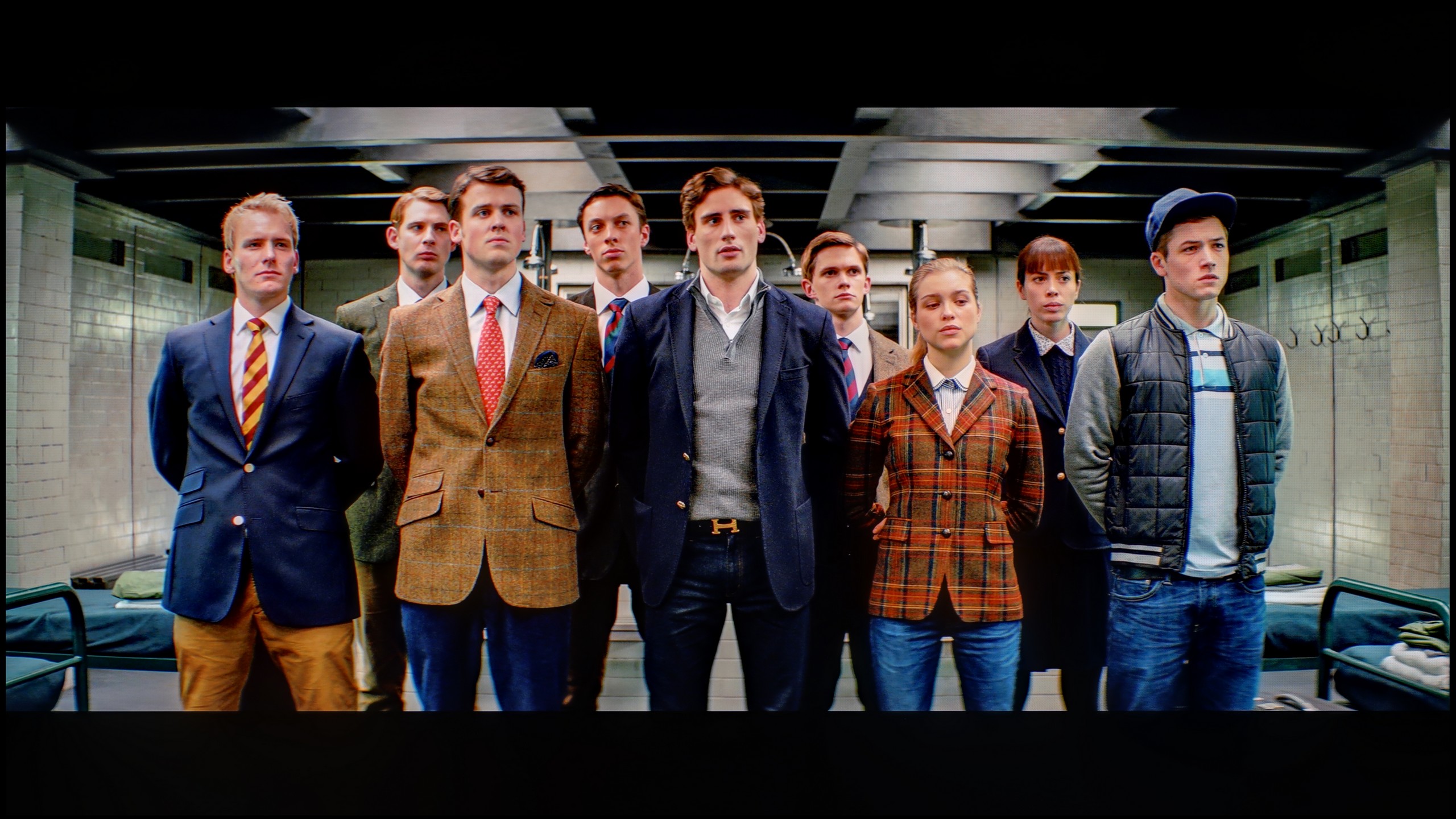

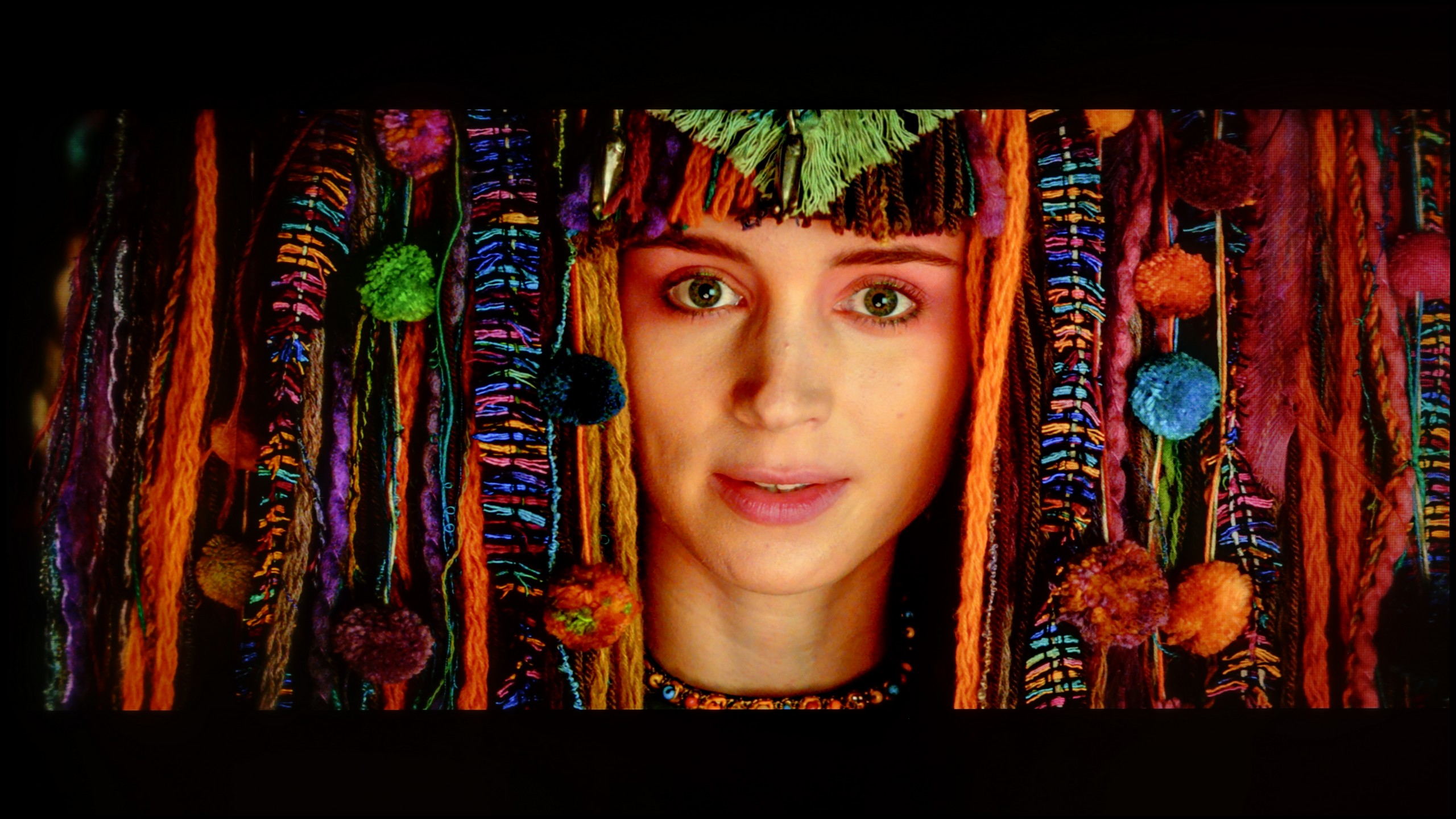
LG B4 has been providing very advanced calibration tools in its TVs for years. We can even say that as the only manufacturer on the market, it allows for such deep intervention in image adjustment. Thanks to these, we were able to calibrate the device so well. The evidence of this is the extremely low deltaE errors, which can be said to stand at a reference level. Both SDR and HDR materials now look exactly as the film director intended. It is no coincidence that TVs of this brand are most often used as preview screens for various graphic or post-production studios.
We have to admit that we didn't have much work with the LG B5. It's one of those TVs that look good right from the start, but after calibration… they can really impress. The white balance was nearly perfect – down to a level of errors invisible to the human eye, unless you're a professional colourist with a magnifying glass at the screen. We also managed to control the TV's tendency to slightly dim the darkest details, especially in HDR scenes. After proper tuning, everything looks cohesive: blacks remain deep but don't swallow information. Highlights maintain a natural sparkle, and colours are true to the director's vision. This is truly one of those models that show you don't have to spend a fortune to have an almost reference-quality image. If you can opt for professional calibration – it's definitely worth it for the B5.
Smoothness of tonal transitions
7.4/10
7.2/10





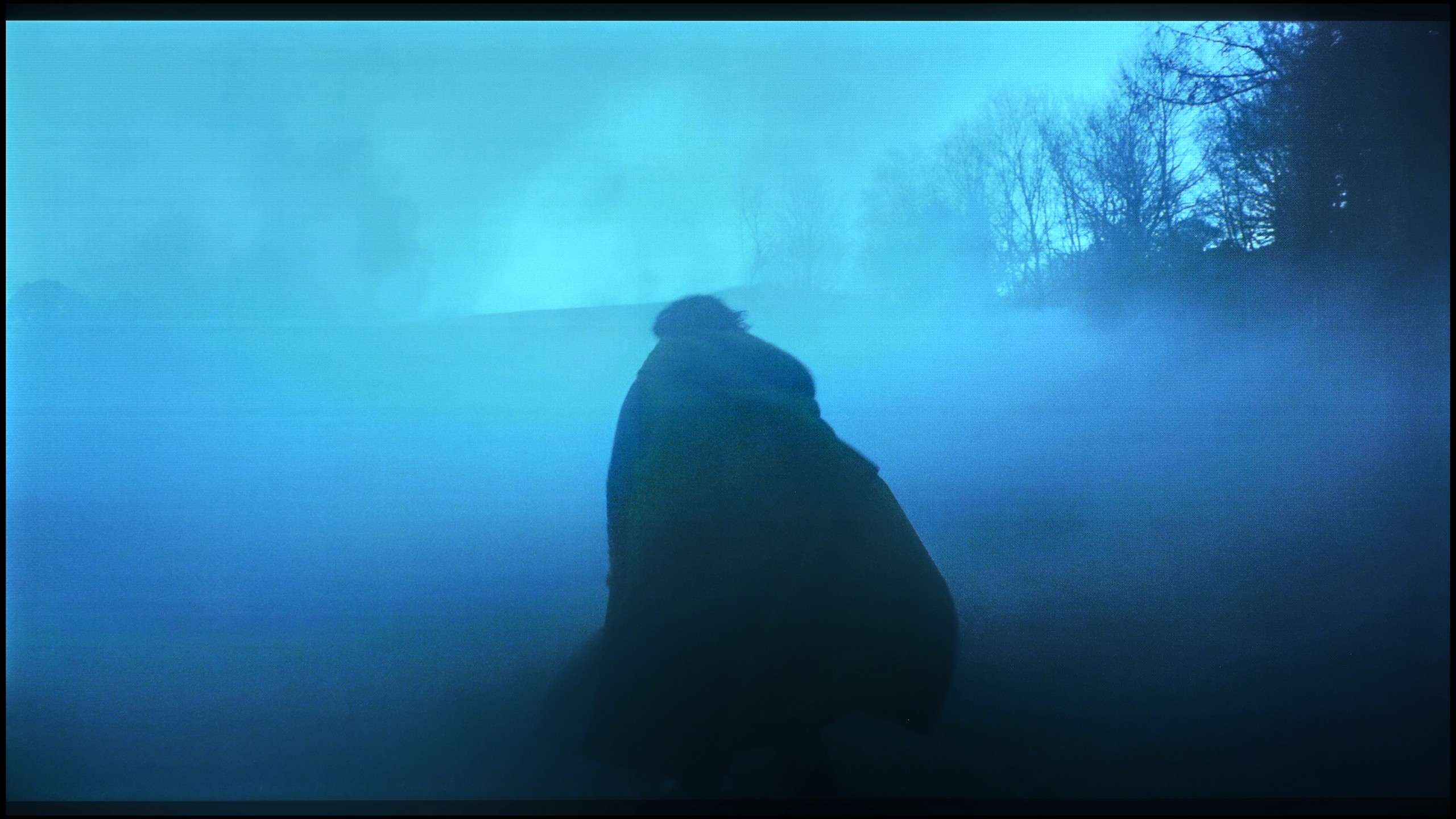

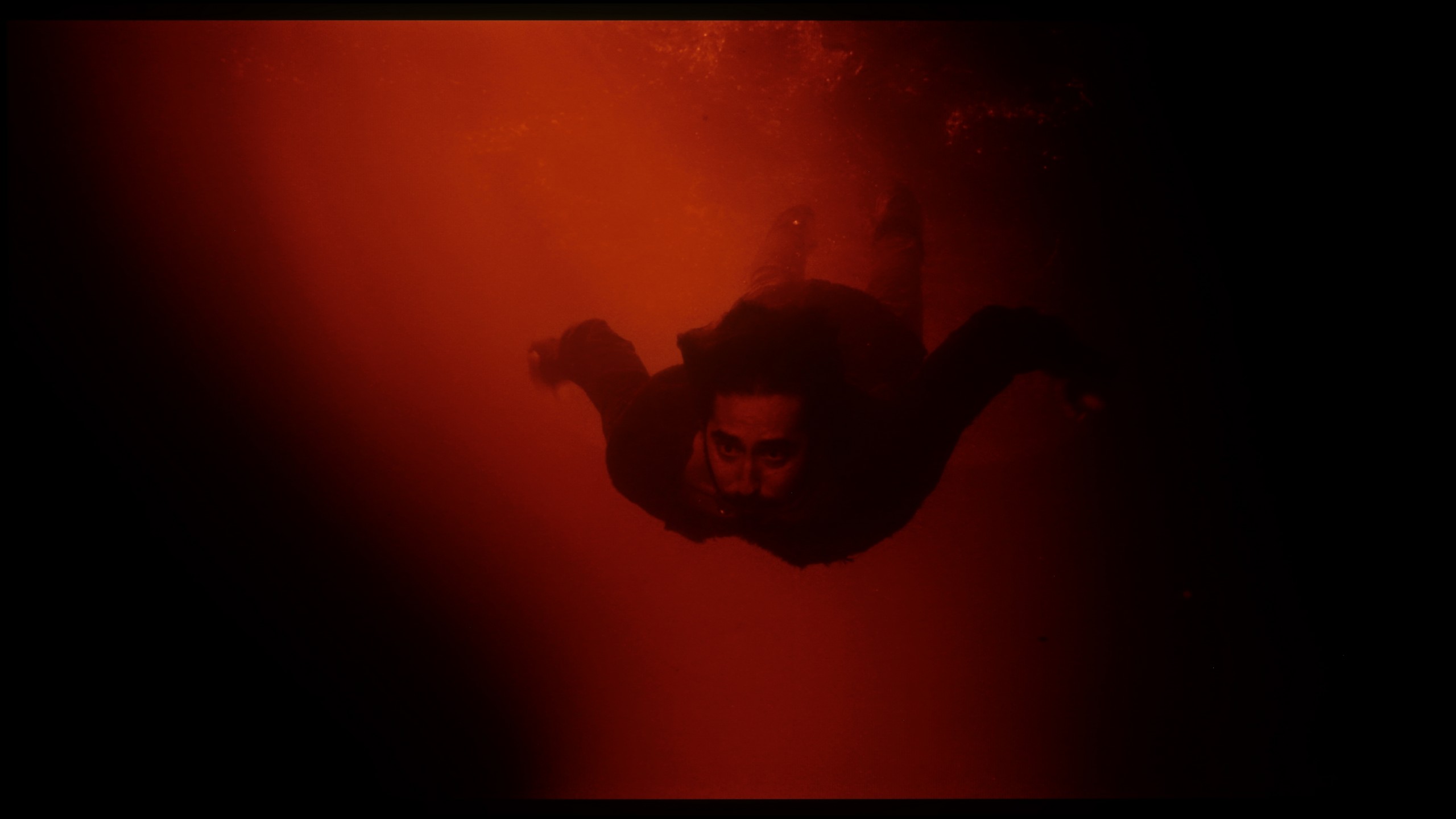




The smoothness of tonal transitions, often overlooked in various tests on competitive portals, is an equally important aspect of image quality assessment. It is particularly crucial when watching materials that feature a wealth of colours and many intricate effects, where textures blend together. This often leads to what's known as colour banding, or a lack of smooth gradation. The tested television handles tonal transition smoothing quite well. However, it's worth noting that it has its weaker moments, such as the bright colourful sky in the film "Kingsman" or "The Martian." These, however, are not issues that detract from the viewing pleasure. Therefore, we assess the quality of tonal transitions in LG B4 positively.
LG B5 handles colour gradation quite decently. In bright scenes, where we have smooth transitions between skin tones, the sky or background, the TV blends colours seamlessly and without hiccups. At first glance – it’s good, particularly considering the price. But just reach for more challenging material – those darker, more demanding scenes with a lot of subtle transitions – and the problems begin. Small artifacts appear, false contours, slight thickening. It’s still not at a level that blinds or distracts from the plot, but the difference compared to more expensive WOLED models – and even more so QD-OLED screens – becomes noticeable.
Image scaling and smoothness of tonal transitions
7.9/10
7.5/10
Smooth transition function

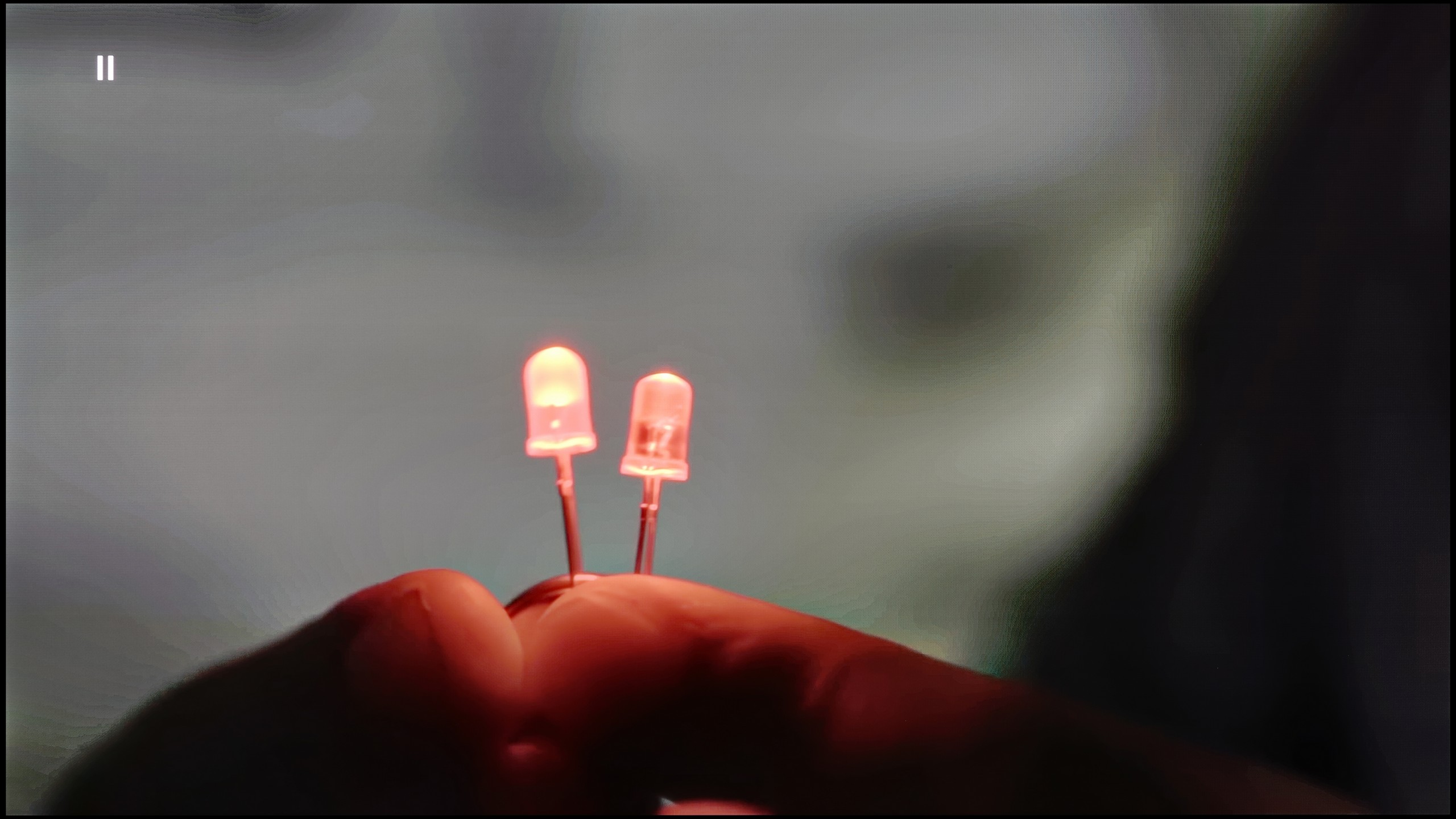
Image without overscan on the SD signal


In this paragraph, we will take another look at the tonal transition smoothing feature, but we will also check how the TV handles lower quality material. As we have managed to check, the setting responsible for smooth gradation works quite effectively, although it has its weaker moments. While the feature works well with SDR content, it becomes less useful with HDR content. Even at the lowest of options, it blurs essential details, so we advise against using it.
The image scaling on LG B4 is rated fairly moderately positively. Although there is no edge splitting, the image itself is naturally "soft". We can change this by adjusting the sharpness slider.
LG B5 really surprised us positively in terms of handling lower quality content. Thanks to the enhancement and smoothing features, HD or even SD materials come to life. Importantly – when this option is turned on at the "low" or "medium" level, we don’t get the impression that the image is artificially softened or overly smoothed. Details remain in place, film grain doesn’t disappear, and the edges of objects don’t look washed out 😉. It’s a really useful tool – especially if you’re watching free-to-air TV, archival materials, or content from YouTube in lower resolutions. The picture is clear, consistent, and simply pleasant to the eye.
Upgrading as such works very well – even low-quality content is reproduced with surprising fidelity. Unfortunately, it’s not without a minor hiccup. Although the menu has an option to turn off overscan, the television still has issues correctly displaying very low-resolution images. It’s a minor detail, but when watching older materials – it can be annoying.
Blur and motion smoothness
8.5/10
8.5/10

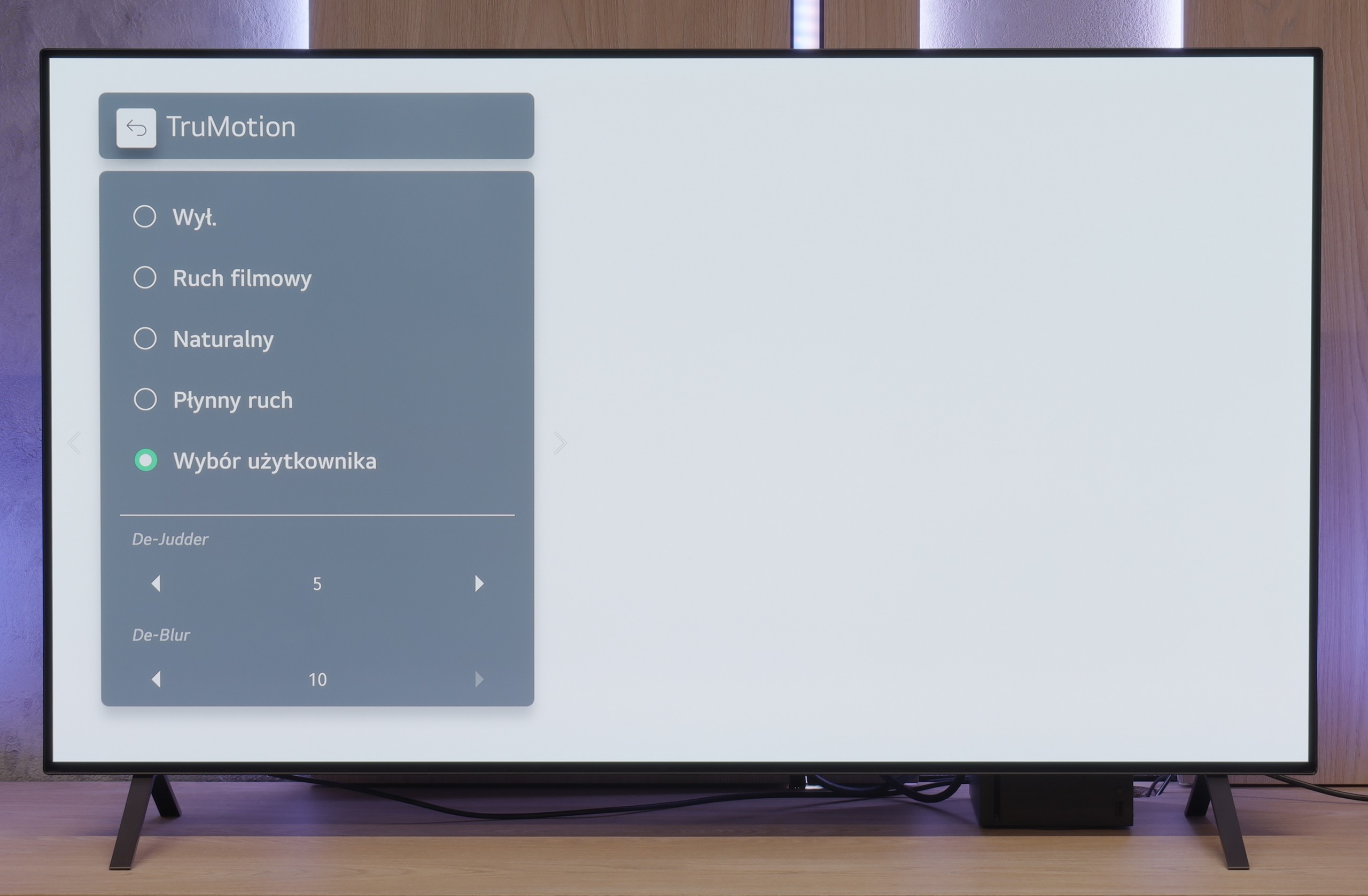
Blur (native resolution, maximum refresh rate):



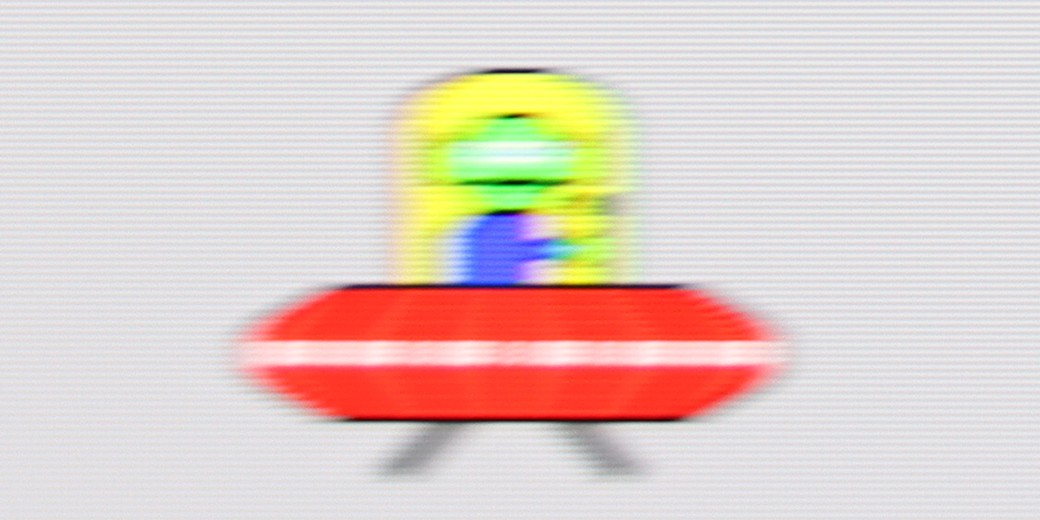
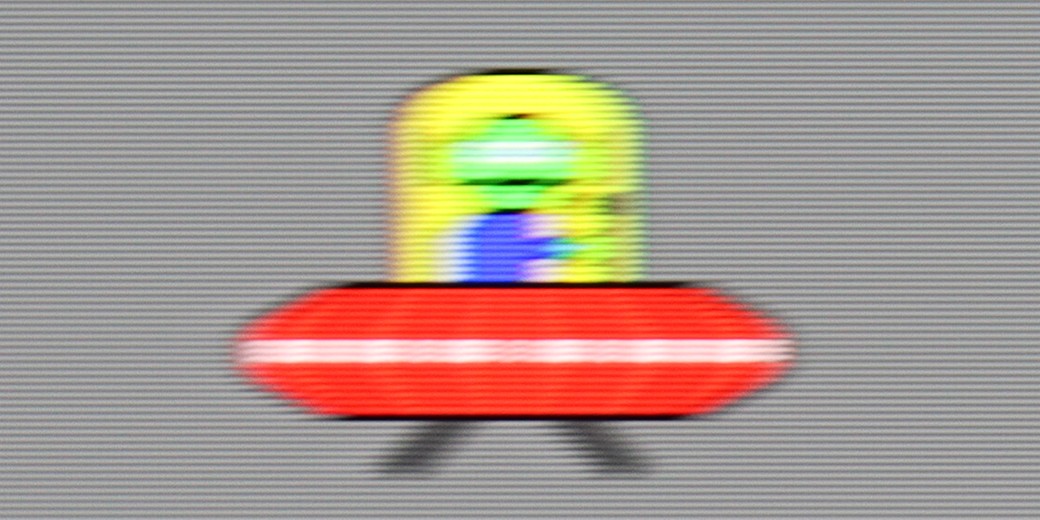
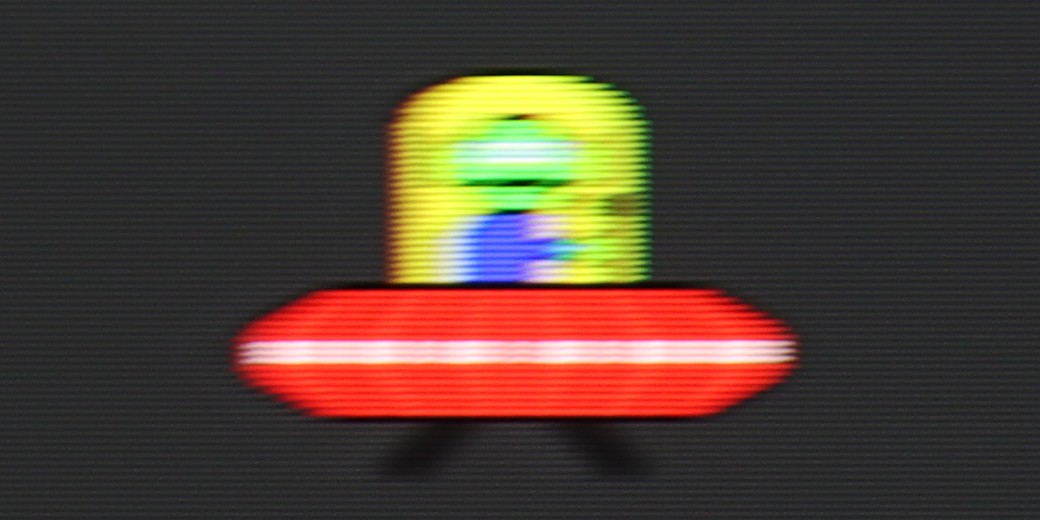
Blur (BFI function enabled):



The maximum refresh rate we can set on the LG B4 is 120 Hz. This is the absolute minimum for those who require high image smoothness. The manufacturer has implemented a multi-level motion smoother called "TruMotion". It has been divided into two separate sliders that adjust the sharpness of moving images (De-Blur) and stuttering (De-Judder). Both sliders can be set in the range from 0 to 10, with each level affecting the degree of smoothness, so everyone can find their sweet spot.
The LG OLED B4 panel features an average response time of 0.1 ms (which directly results from our measurements), allowing for an incredibly clear image, unattainable for LCD TVs, which have response times of even several milliseconds. This can be clearly seen in images from the "UFO Test", showing no trace of blur trailing behind the object.
LG B5 is a TV with a 120 Hz OLED panel. It may not sound as impressive as the marketing terms "144 Hz" or "165 Hz" commonly found in gaming monitors, but honestly? The smoothness is still excellent. The picture is sharp, fluid, and simply enjoyable to watch – even when there’s a lot happening on screen. The organic panel does its job – the pixel response time is almost instantaneous, which means there’s no risk of ghosting or blurring that can ruin dynamic shots. Sports, fast-paced games – everything looks clear and distinct.
We also have the classic LG motion smoother, TruMotion. It allows you to smooth out movies shot at 24 frames – in other words, most of what you watch on Netflix or from Blu-ray discs. If you set lower values on the “De-Judder” slider, you’ll get a picture closer to the cinematic experience – with a slight judder, but without artificiality. Higher settings? Soap opera effect guaranteed. Fortunately, LG gives you the choice, and you can tune everything to your liking.
Console compatibility and gaming features
10/10
10/10
- ALLM
- VRR
- VRR range40 - 120Hz40 - 120Hz
- Dolby Vision Game Mode
- Correct implementation of HGIG
- 1080p@120Hz
- 1440p@120Hz
- 4K@120Hz
- Game bar

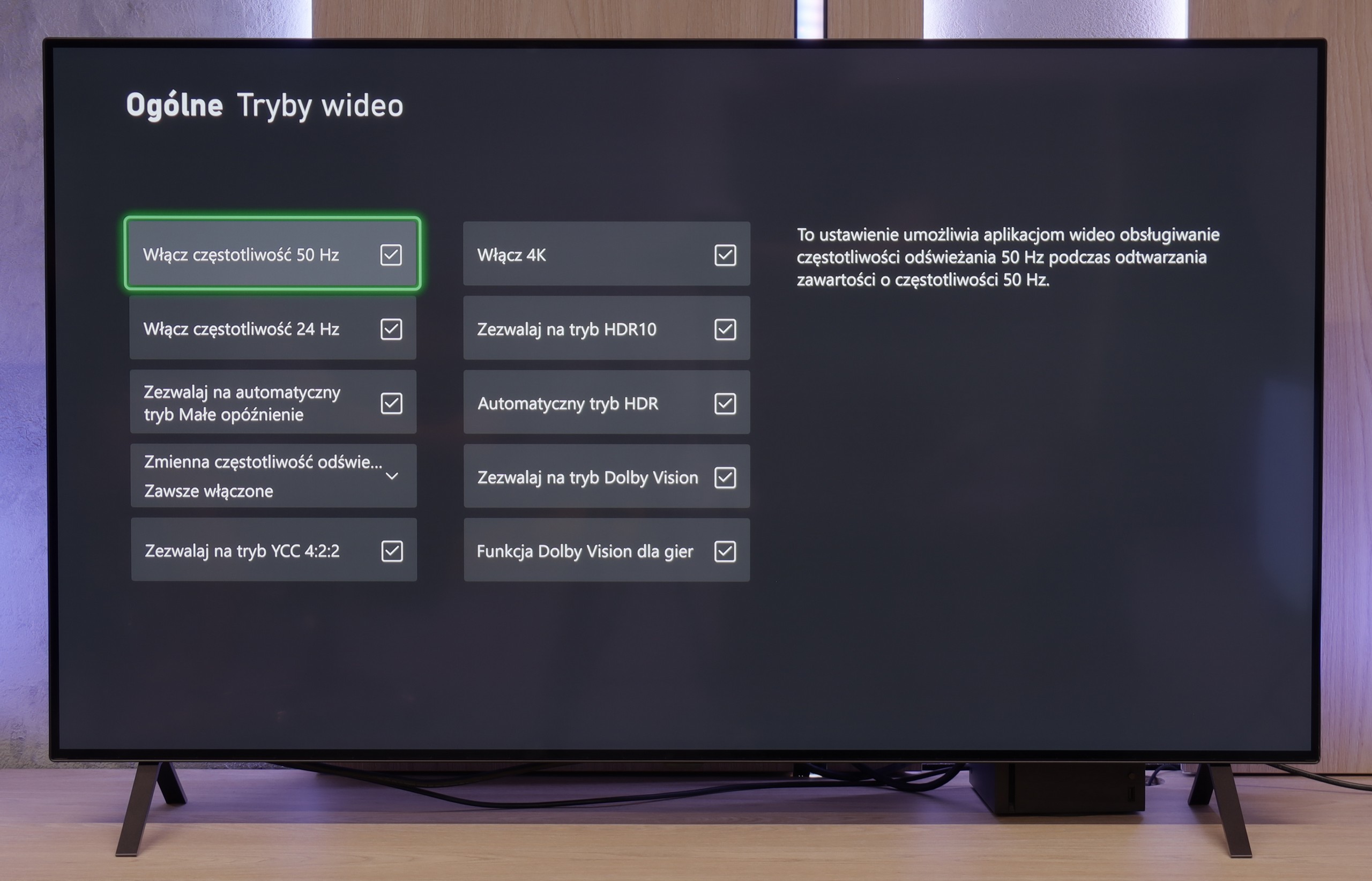

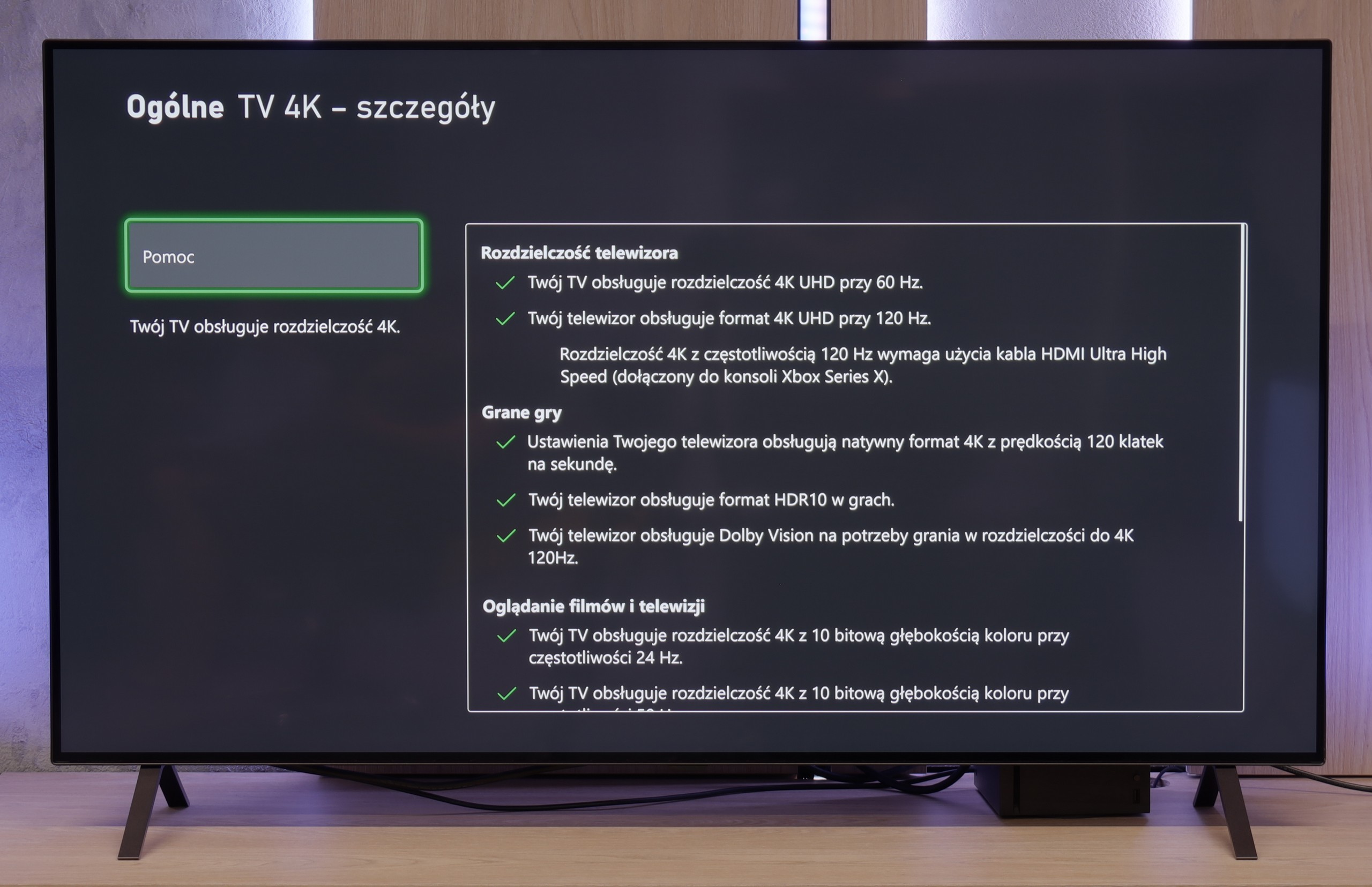

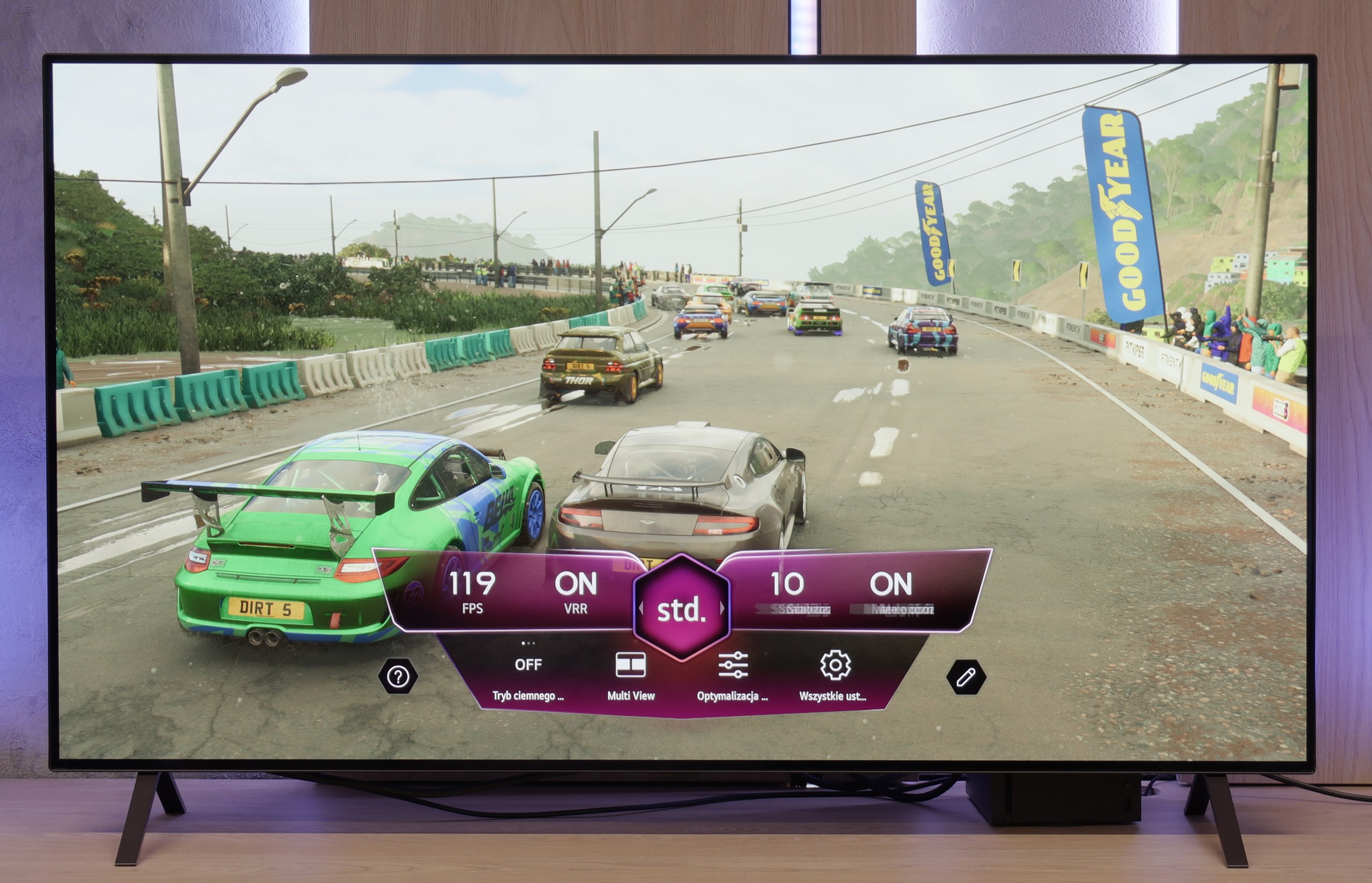

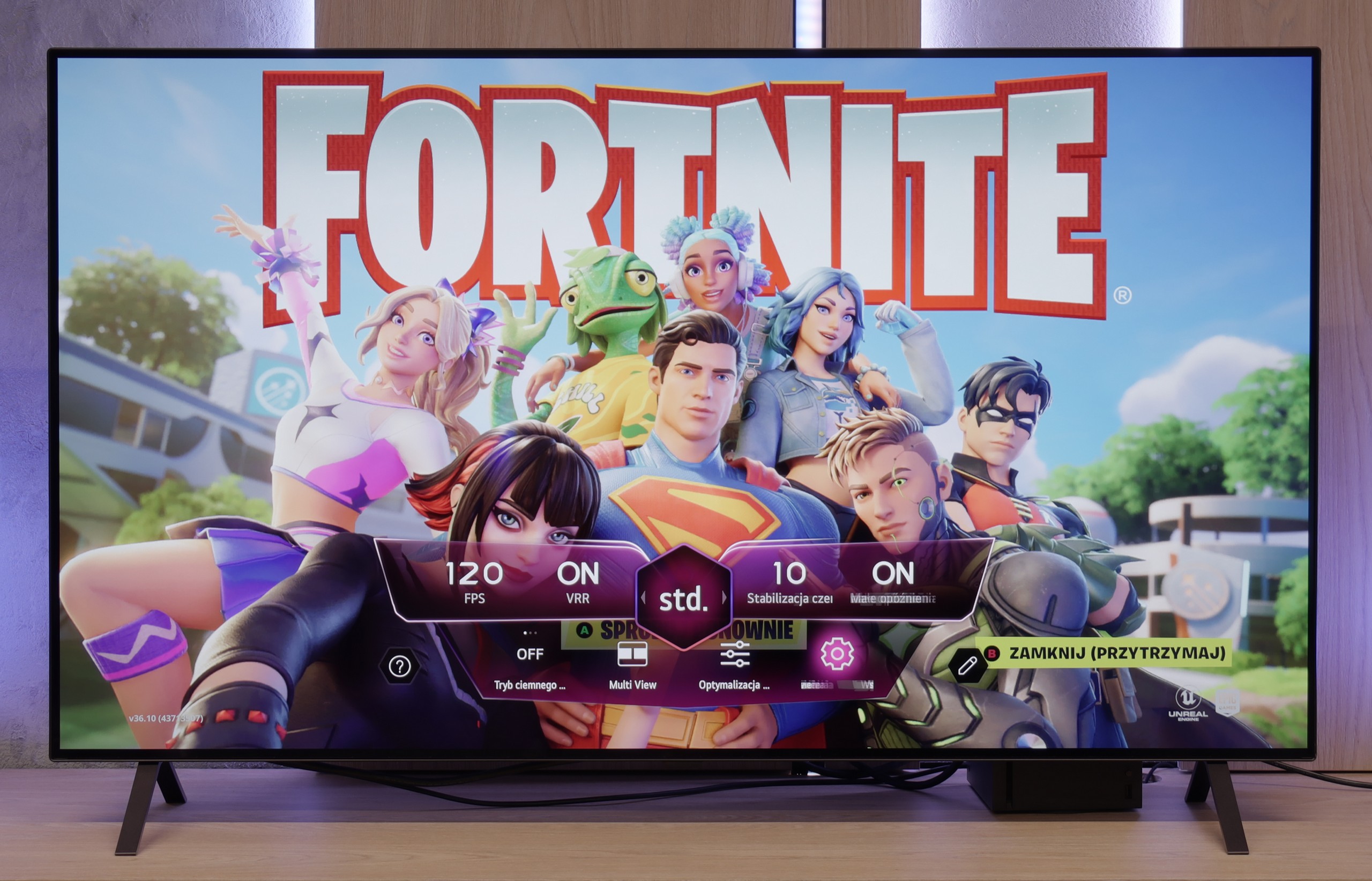
The LG B4 television is equipped with four full-fledged HDMI 2.1 ports with a full bandwidth of 48Gbps. All functions corresponding to this standard activated without any issues, and throughout the entire testing procedure, they caused no problems. The combination of such extensive functionality and low input lags leads us to say that the tested television is truly designed for gaming. This is not surprising, considering that the manufacturer has always placed great emphasis on this. Therefore, we can enjoy both a properly implemented HGIG mode and gameplay in Dolby Vision with low latency. Such a tandem will surely attract the attention of all passionate gamers for whom quality is the most important.
A standard feature in televisions from the Korean manufacturer is also the implementation of GameBar, allowing for quick adjustments of settings "on the fly," without the need to exit the game. It also enables image adjustments for individuals with visual impairments, which is an extremely nice touch. Another important piece of information is that when the VRR technology is turned on, we will not experience a drop in contrast. This is, of course, due to the construction of the panel and the lack of conventional backlighting. However, it is normal for shades of grey to flicker slightly, although this is a characteristic feature of this function regardless of the manufacturer and the television.
In summary: The LG B4, like all OLEDs from the manufacturer equipped with 120Hz panels and HDMI 2.1 ports, creates a harmonious whole with the console. In practice, it is a complete television, and if we expect the highest possible efficiency in gaming, the B4 will be the ideal choice.
There are already a few TVs on the market with the "for gamers" label that don't really understand what that means. The LG B5 is not one of them. Everything here is spot on – there are four HDMI 2.1 ports, 120 Hz, there’s VRR and ALLM, and there’s also a Game Bar that's actually useful, not just looking good in the brochure. You plug in a console – it works. You set it to 4K at 120 Hz – it works. You have an Xbox and want to play in Dolby Vision – it works too. And it's not just "theoretically supports," it actually turns on, looks good, and you don't have to fiddle with settings for half an hour. Plus, there’s the HGiG picture mode, which LG has implemented correctly – meaning HDR in games doesn't turn the screen into a strobe light, but shows exactly what it should. There are no surprises, no strange limitations, no "buts." And you know what? That's how it should be. Cheers to the LG B5!
Input lag
10/10
9.9/10
SDR
HDR
Dolby Vision
Delay times for LG B4 are incredibly low in every scenario. Even the most passionate gamers will certainly appreciate the very low input lag of just 5 ms at demanding settings of 4K 120 Hz with HDR. It's also worth noting that the latency at the same settings, but with Dolby Vision HDR enabled, remains unchanged, which is not as obvious with the competition. Therefore, it deserves the highest rating and recommendation.
Here we won’t be going on about it – the LG B5 simply has great input lag. For 60 Hz content, it achieves results below 10 ms, and for 120 Hz it even drops to around 5 ms. These are values that can’t be reasonably criticized. It just works instantly, without delays, without surprises. Well... almost. Because as usual, there’s a slight asterisk with the Dolby Vision Gaming mode. In this mode, the response time slightly increases. It's nothing dramatic – they’re still very low values, likely unnoticeable while gaming – but if you’re only playing tournament titles and fighting for every millisecond on your XBOX, it’s worth keeping in mind.
Compatibility with PC
7.6/10
7.6/10

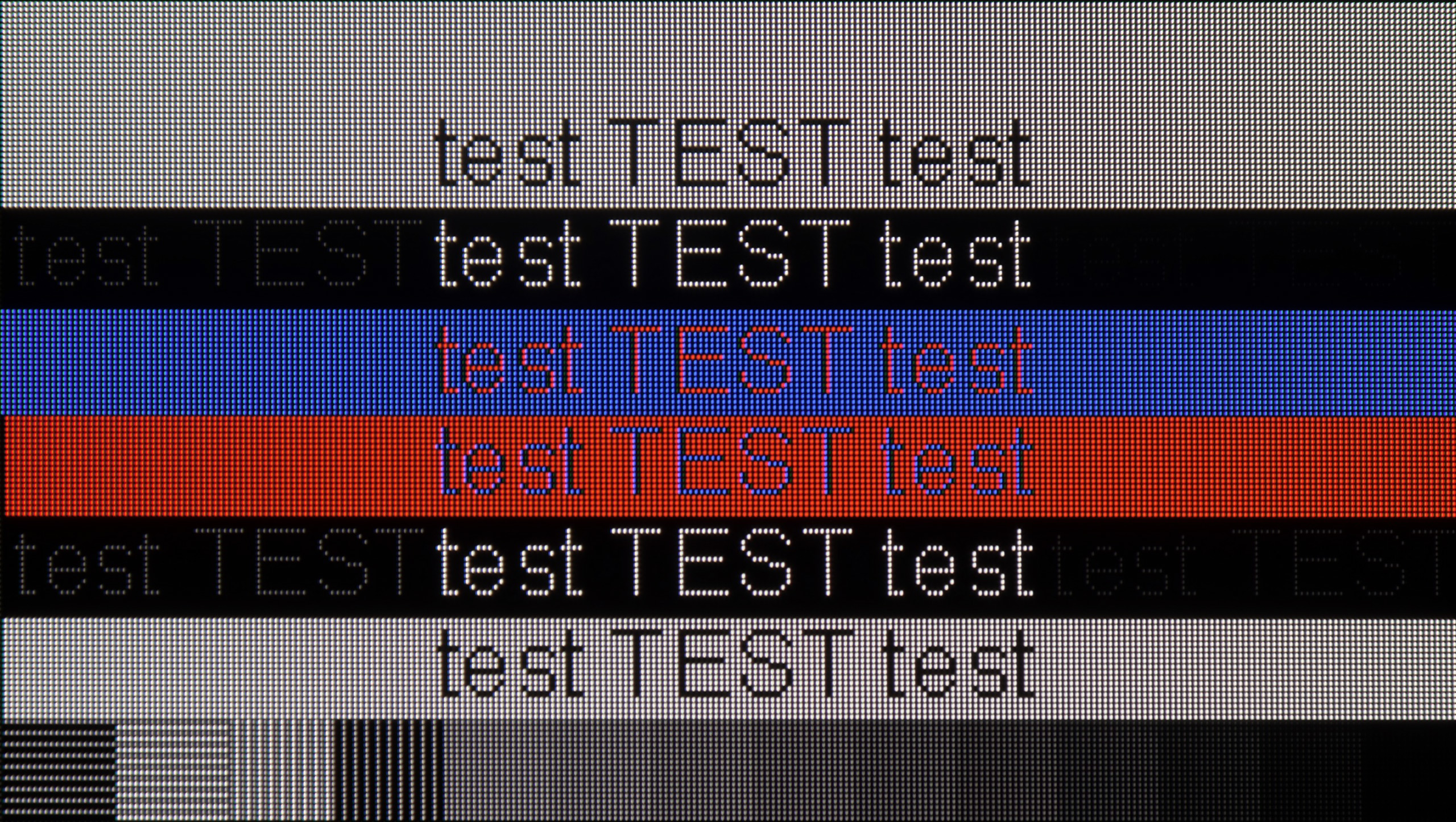
LG B4 paired with a PC performs excellently due to its very low latency of just 13.5 ms, which is virtually instant response between the mouse, the eye, and the screen. A crucial aspect of working on a display is readability, which in the case of the tested television is very good. However, it's worth noting that to achieve sharp fonts, you need to enable the passthrough option in the settings.
The RWBG pixel layout does not significantly affect the display of fonts or letters, which is a notable advantage over Samsung's QD-OLED matrices. Users of both Windows and macOS equipped computers will certainly be pleased with the performance on the tested television screen.
LG B5 is a television that communicates well with a computer. You won't find gaming features like 144 or 165 Hz here, but is that really necessary for anyone? Thanks to the 120 Hz panel, low input lag, and G-Sync support, it's actually a very good screen for gaming on PC. No stuttering, no tearing, with instant response.
But it's not just for gaming. The B5 can also be quite comfortable for... simply working. The television correctly supports chroma 4:4:4, so fonts are legible, interfaces are clear, and your eyes won't hurt from blurry text. This isn't obvious, even among more expensive models. However, there is one "but" – and this applies not only to the B5, but to every OLED with a WOLED panel. The RWGB subpixel arrangement can cause a slight shadow at the edges of fonts. This isn't something that stands out from the couch. It's more likely to be noticed by someone sitting close to the screen and spending half a day in Excel.
Viewing angles
7.4/10
7.4/10
The undeniable advantage of OLED panels is their efficiency in group viewing, meaning from different angles. LG B4 maintains very good contrast, colour saturation, and fidelity. While it may not match organic TVs supported by MLA technology, it cannot be said that anyone who purchases the device has been dissatisfied with the results. However, it should be noted that at sharp angles, a slight greenish tint can be observed. This is a characteristic feature of WRGB panels from LG, without the aforementioned micro-lens technology, and unfortunately, there is nothing that can be done about it.
In terms of viewing angles, the LG B5 performs very well – exactly as you would expect from a WOLED panel. No matter from which side you sit, the picture retains its quality. Colours don't fade, contrast doesn't drop off sharply, and details remain clearly visible. However, it must be honestly added that this is not the level of QD-OLEDs from Samsung Display. Those manage to hold colour saturation even better under extreme angles. But if you don't plan on watching films while sitting at a 90-degree angle – the B5 is more than sufficient. It's one of those TVs that is just pleasing to look at – from any side.
TV efficiency during daytime
5.7/10
4.9/10

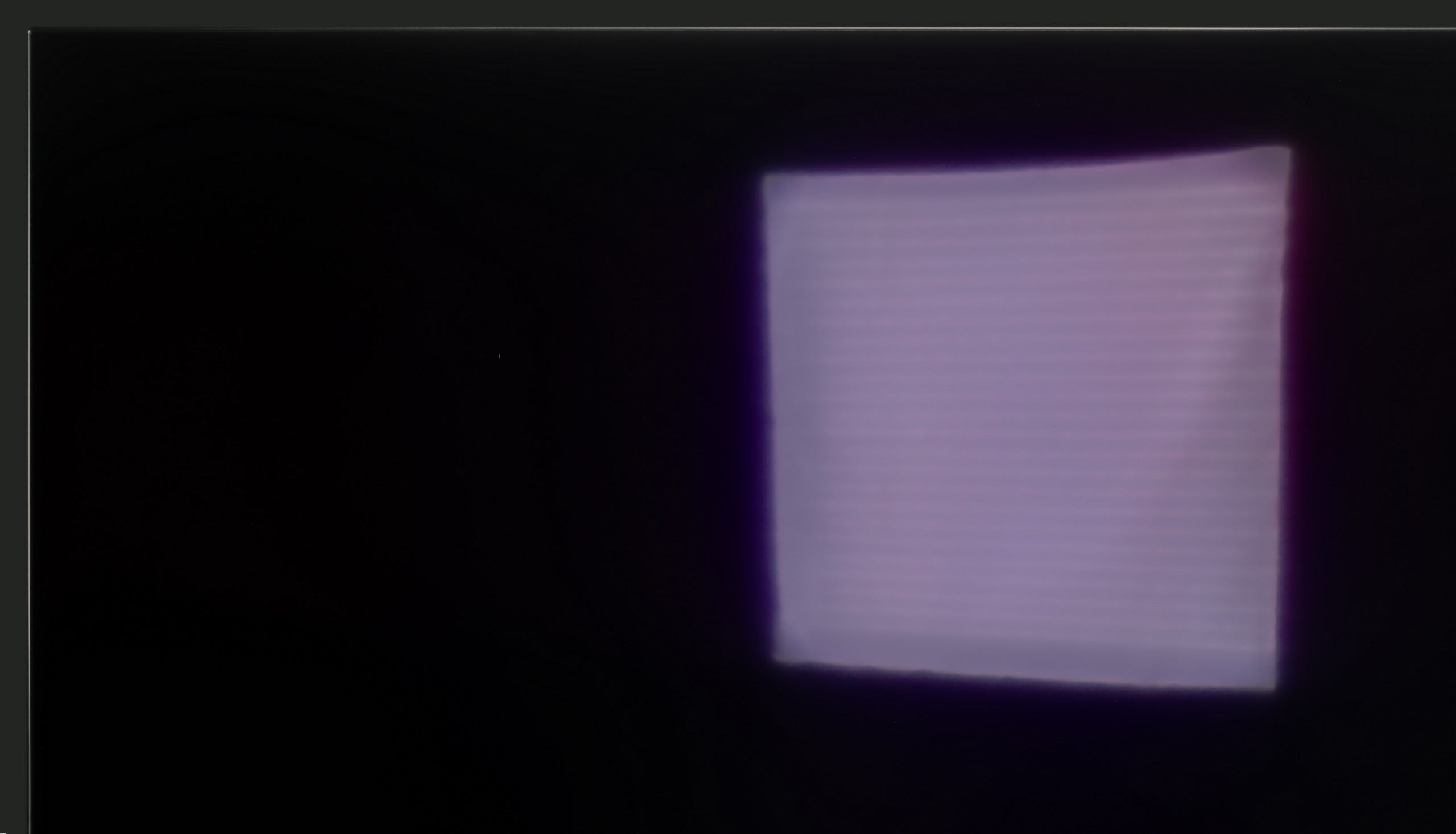

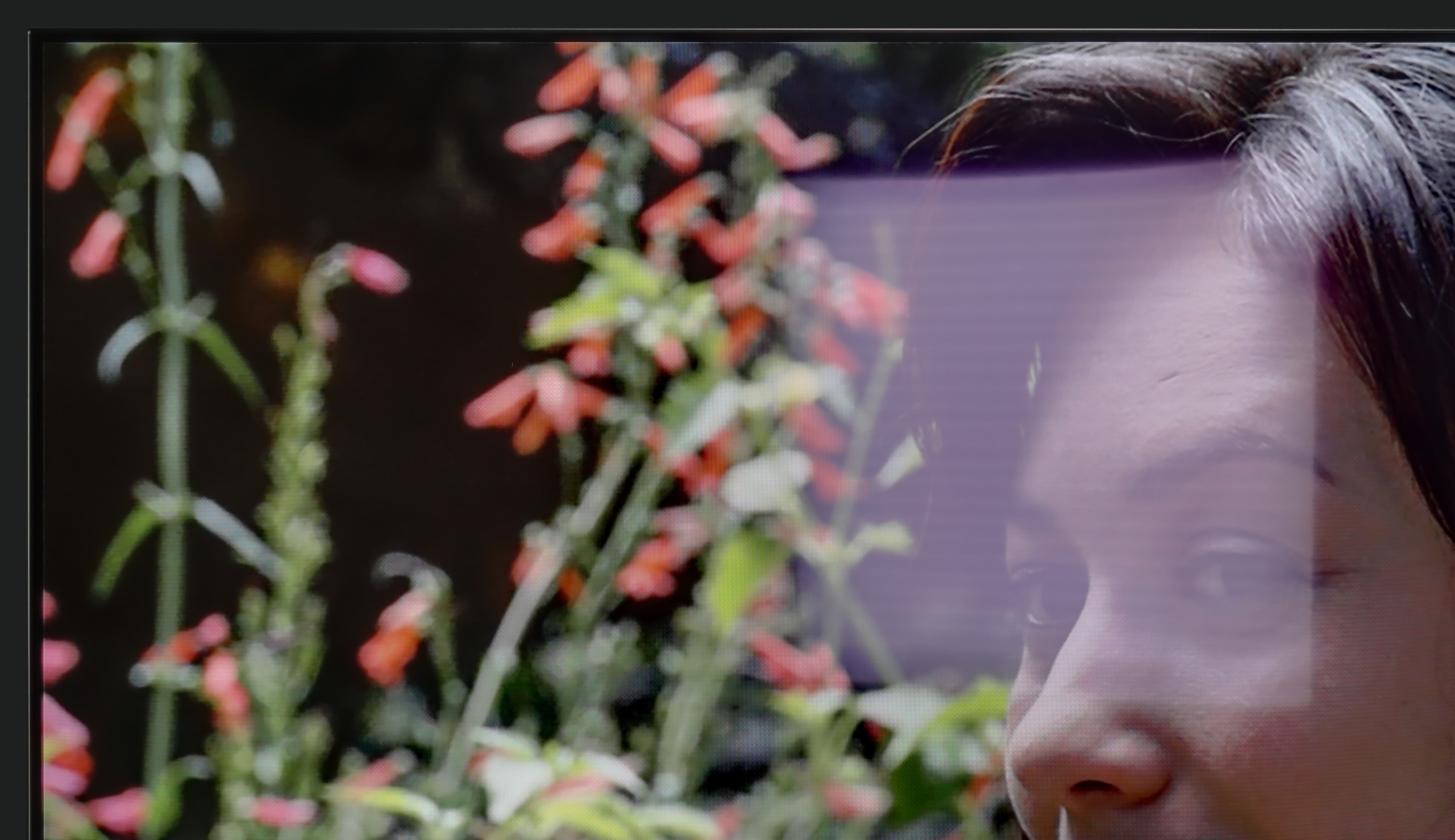
Matrix brightness
Average luminance SDR
LG OLED B5: 279 cd/m2
LG 55 B4: 374 cd/m2
The maximum brightness of the TV in SDR materials is 370 nits. For an OLED TV, this is a very good result, allowing for quite comfortable viewing during the day. There are two things worth noting. The first is the rather average handling of reflections caused by the satin finish of the panel, which means that direct light hitting the TV can be quite intrusive. The second issue is the screen brightness at 100% white fill, hovering around 260 nits, which is an outstanding result, as until recently, OLED TVs in this range could "boast" a brightness two times lower. This means that conditions for watching, for example, winter sports, will be very good.
The LG B5 is a television that feels best after dark. But when the sun comes in, it becomes a bit of a challenge. The brightness of this model is rather average, and the anti-reflective layer… also average. There are no special coatings here that deal well with reflections or very bright daylight. So if you're planning to place this television opposite a large, uncovered window – it may simply be hard to see anything.
Fortunately, there is something worth praising: the glossy WOLED panel maintains good colour saturation. Even in difficult conditions, the image doesn't fade or become "washed out," as can happen with some television models. In general, it's watchable, but if you're looking for a television specifically "for a bright lounge room," the B5 shouldn't be your first choice.
Details about the matrix
Subpixel Structure:
Panel uniformity:

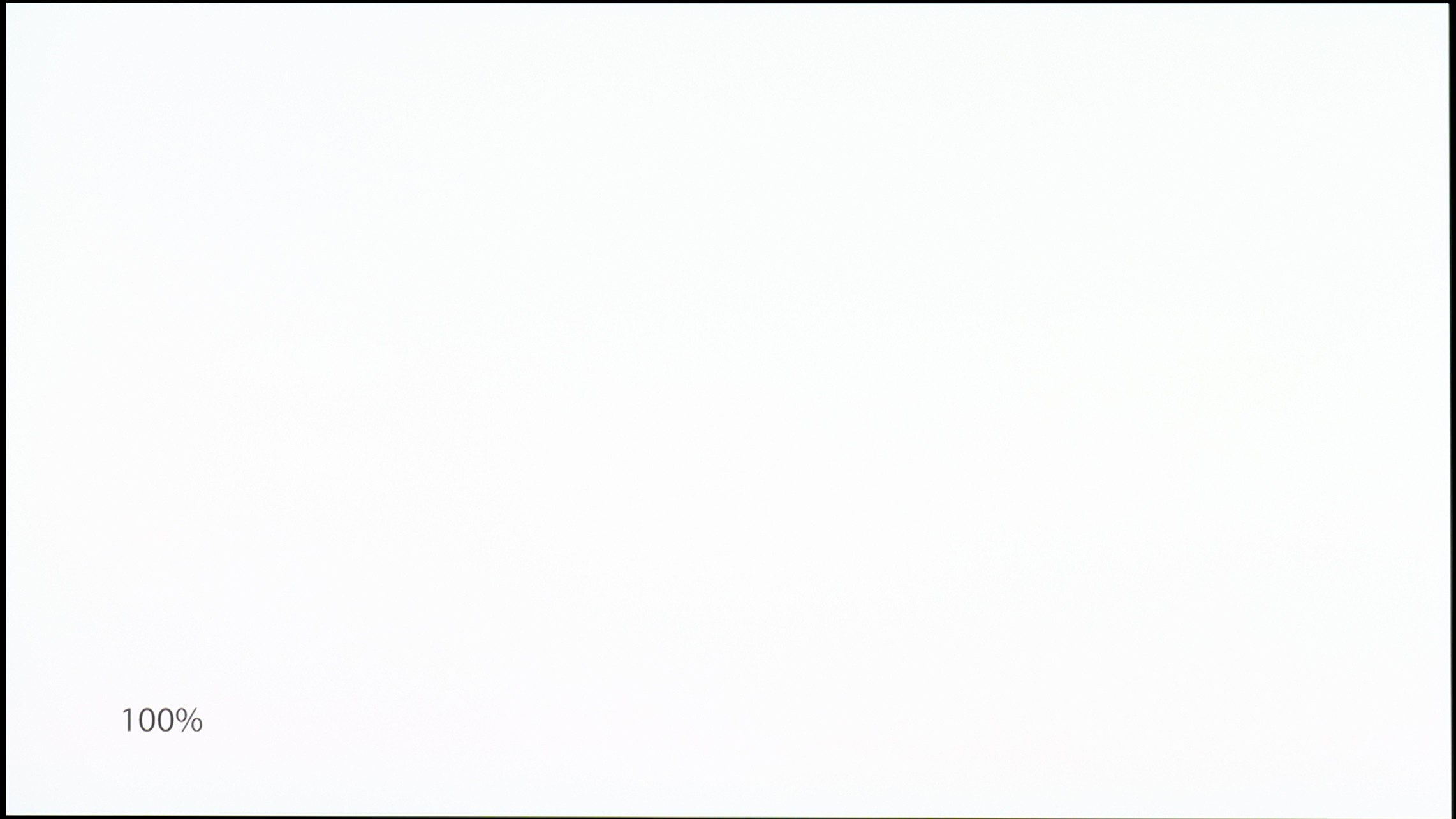
TV features
9/10
8.2/10
- HDMI inputs0 x HDMI 2.0, 4 x HDMI 2.1 48Gbps0 x HDMI 2.0, 4 x HDMI 2.1 48Gbps
- OutputsToslink (Optical audio), eARC (HDMI), ARC (HDMI)Toslink (Optical audio), eARC (HDMI), ARC (HDMI)
- Network InterfacesWi-Fi 2.4GHz, Wi-Fi 5GHz, Ethernet (LAN) 100MbpsWi-Fi 2.4GHz, Wi-Fi 5GHz, Ethernet (LAN) 100Mbps
- TV receptionDVB-T, DVB-T2, DVB-S, DVB-S2, DVB-CDVB-T, DVB-T2, DVB-S, DVB-S2, DVB-C
Classic features:
- Recording to USB (terrestrial TV)
- Recording programming
- Picture in Picture (PiP)
- RF remote control (no need to aim at the screen)
- Backlit remote control
- Teletext
- Audio only mode
- Possibility to connect Bluetooth headphones to the TV
- Possibility to simultaneously use Bluetooth headphones and the TV speaker
Smart features:
- AirPlay
- Screen mirroring (Windows Miracast)
- Wyszukiwanie głosowe
- Voice search in native language
- Ability to connect a keyboard and mouse


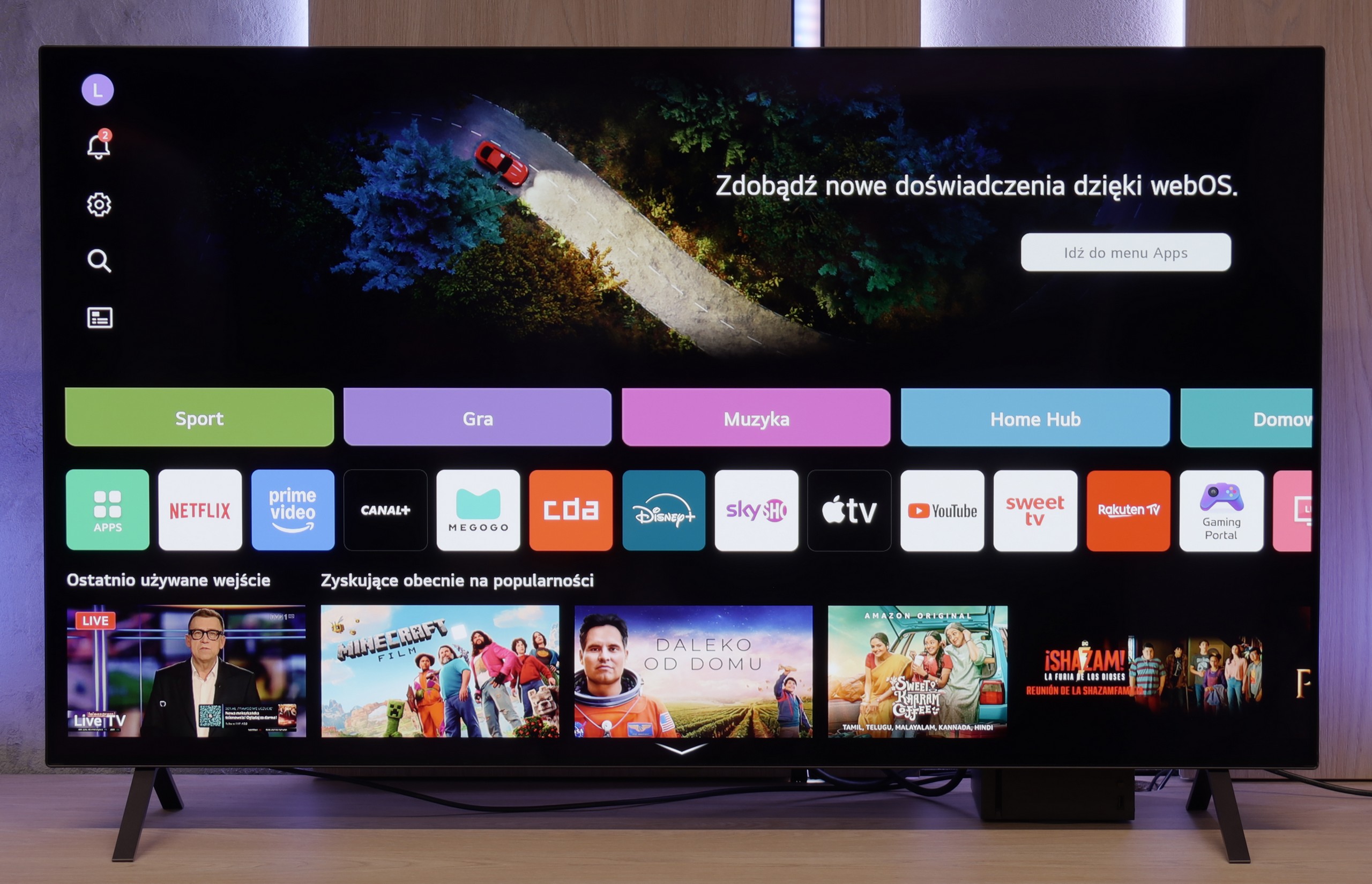
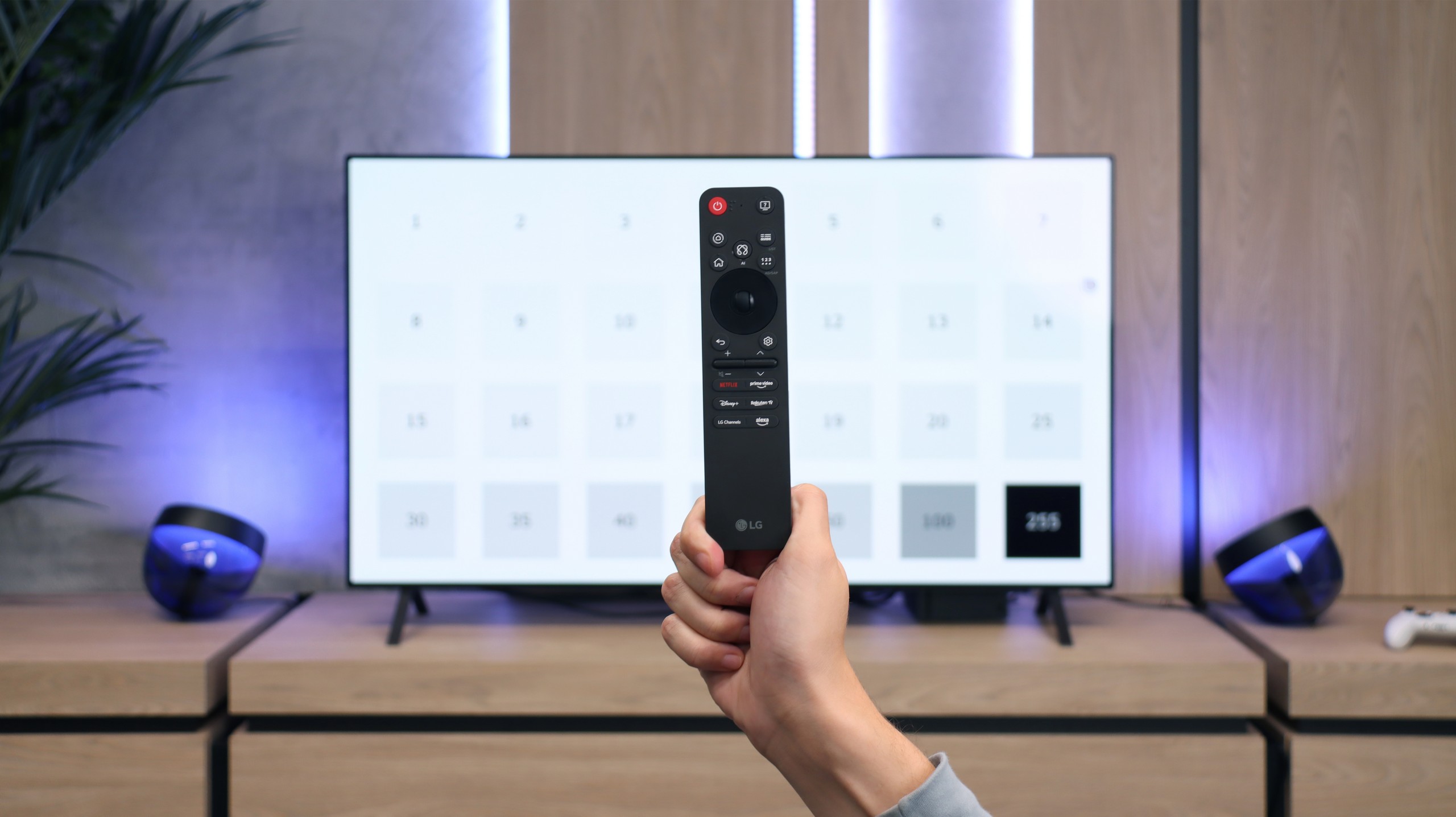
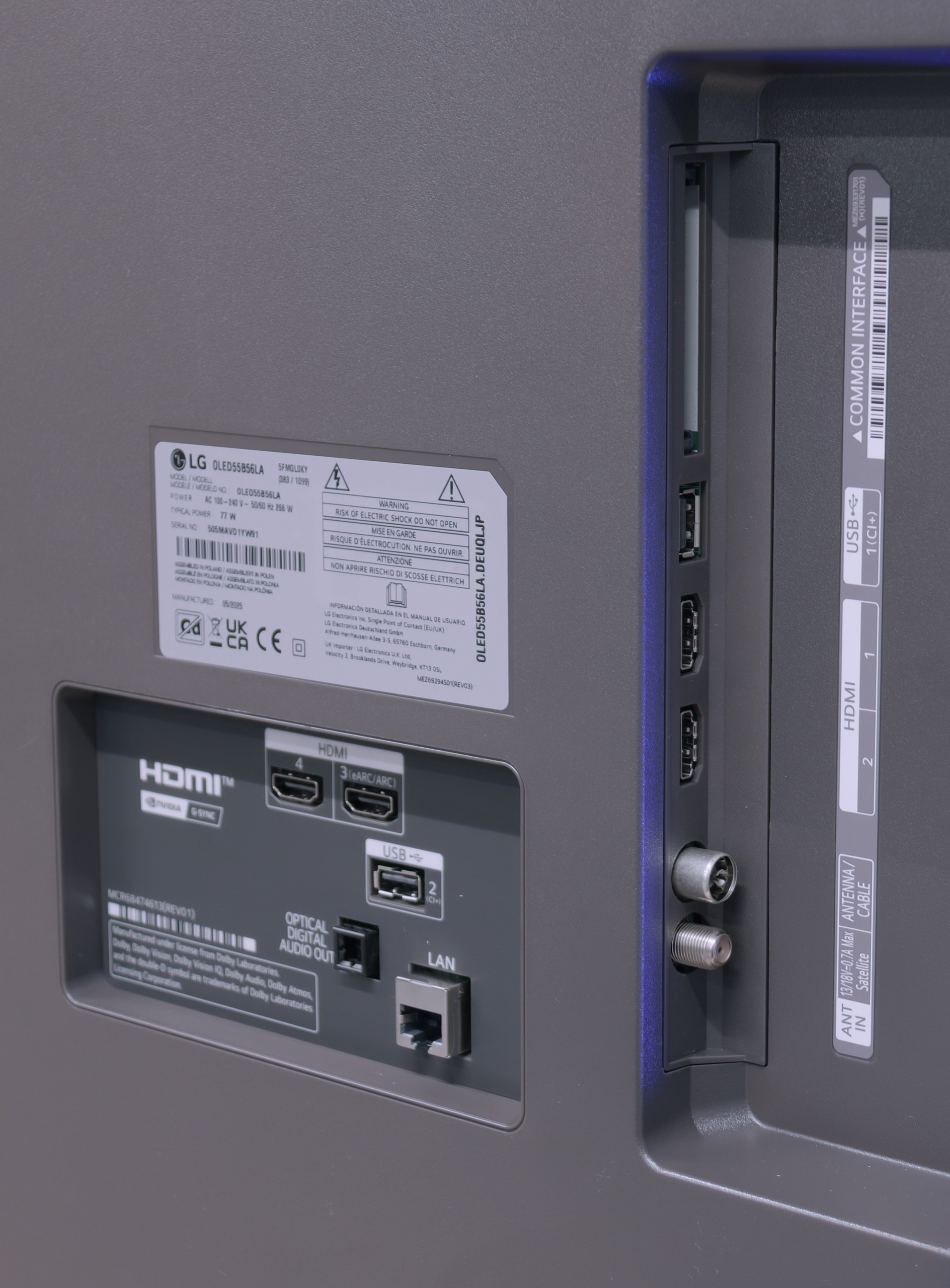
LG B4 uses the well-known proprietary WebOS system that has been around for many years. The system itself offers virtually all the most important applications, and those that are missing can be counted on one hand, such as CDA or KODI.
WebOS also features a highly valued ability to perform operations using a cursor that appears when the remote is in motion. The convenience of such a function is invaluable when entering queries or passwords for portals. WebOS, like most systems, also supports features such as screen mirroring, AirPlay, voice search in Polish, and the ability to connect headphones via Bluetooth. More down-to-earth things, WebOS allows us to use headphones and the TV's speakers simultaneously, which will surely be a great assistance for people with hearing disabilities. Among the more interesting features that will primarily appeal to sports fans, there is the option to turn on an alert informing about an upcoming match, ensuring that we never miss a broadcast. The home panel also deserves praise, allowing control of all smart devices connected to the home network. For example, the end of a washing cycle will be signalled by a notification in the top right corner.
In summary, the WebOS system, although less known and having certain limitations compared to Android TV, offers stable and fast operation and supports most features that users might need. It is a solid solution for those looking for a simple and effective operating system in a television.
Functional Features
Even though the LG B5 is modern equipment, it hasn’t forgotten those who simply want to... watch television. No apps, no accounts, no logging in anywhere. We have built-in DVB-T2 tuners and the ability to record onto USB, with a clear and fast EPG guide. Is that not enough? There’s even a working teletext – for many, surely a relic, for others, a daily occurrence. A plus is also the option to turn off the picture and just keep the sound, which works great for listening to music. And if you want to watch quietly – you can easily pair Bluetooth headphones, without wrestling with settings and without delays. Everything works as it should.
SMART TV: webOS
The biggest distinguishing feature of the webOS system – still! – remains the way you control it. The Magic remote, which we get with the LG B5 (in our version B56 – the one without the numeric keypad), works like a magic wand. We point, click, select. And it simply... works. Intuitively, quickly, and without unnecessary clicking left and right. Added to this is the AI voice assistant – quite efficient. You can summon it directly from the remote and use your voice to search for content, change settings or switch sources. WebOS may not be the most "modern" system on the market, and built-in ads can be annoying, but when it comes to ease of use – especially with the Magic remote – it still stays one step ahead of the competition.
Playing files from USB
8.5/10
8.6/10
Supported photo formats:
Maximum photo resolution:

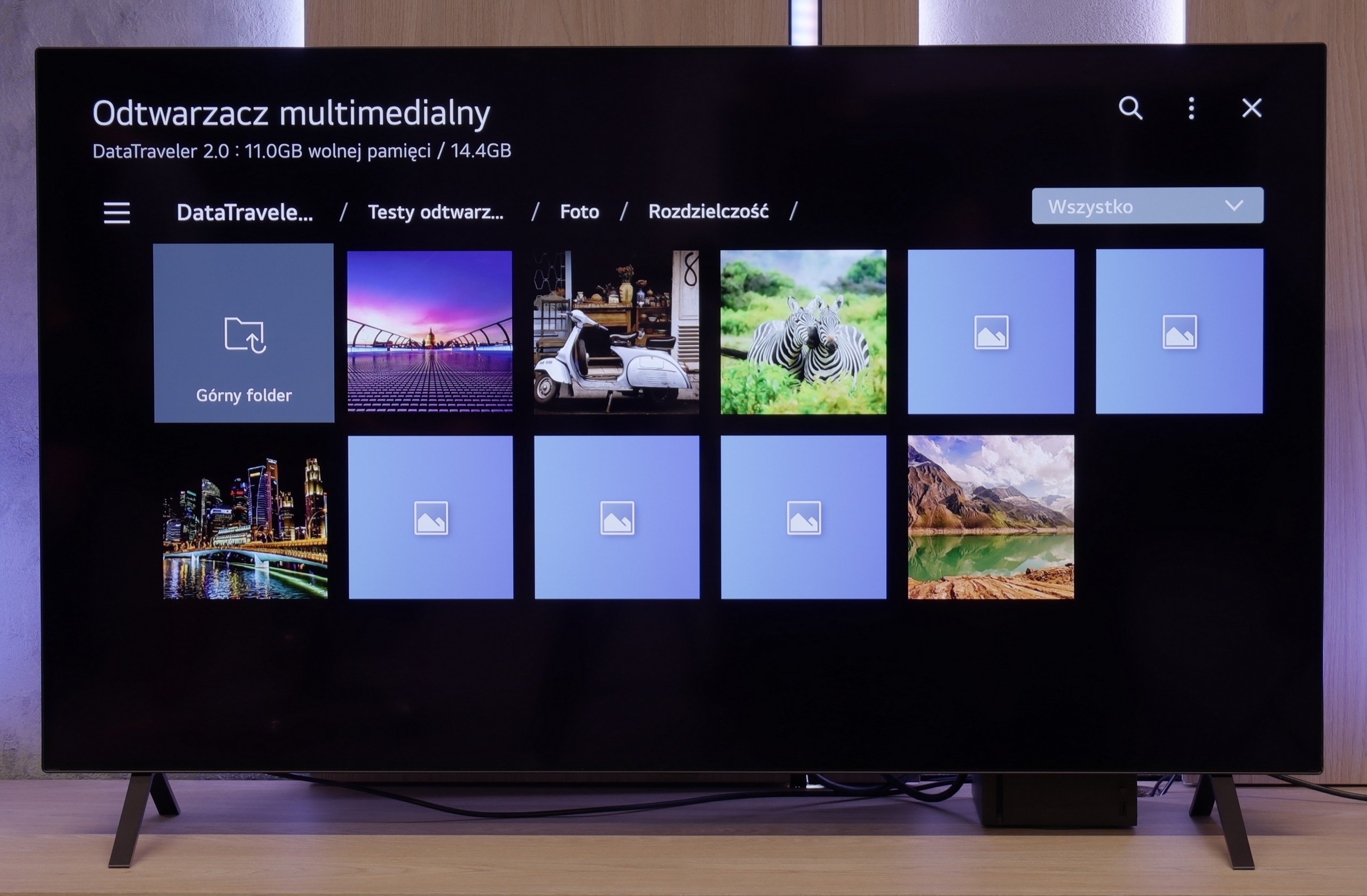
The default file player in LG B4 definitely handles most photos quite well, although it's surprising that some equally popular ones are missing. We can successfully play videos recorded in practically all the most popular formats, including Dolby Vision. The only codec that LG B4 won’t play is H.266 VVC, although this is currently rather unused. However, it’s worth noting the supported photo formats, which are just two: JPEG and PNG. Apple phone users may feel disappointed by the lack of support for the HEIC format, which is the default format when taking photos. The remedy for this is to use the built-in AirPlay feature. We should also mention the lack of TXT subtitle support.
LG B5 handles USB files as it should. Most popular formats work seamlessly, and subtitles – even with Polish characters – are displayed correctly. You can comfortably play a movie from a USB drive or have a weekend slideshow of your holiday photos without worrying that something will go wrong. However, there was a surprise with files in HEIC format – that is, photos saved by Apple devices. While the LG C5 had no issues with them, the B5 stubbornly refused to cooperate and was unable to display them. A little hiccup that probably won’t affect everyone, but it’s worth knowing about.
Apps
8.7/10
8.7/10














































Sound
7.1/10
7/10
- Subjective sound quality:7.1/107/10
- Dolby Digital Plus 7.1:
- Dolby True HD 7.1:
- Dolby Atmos in Dolby Digital Plus (JOC):
- Dolby Atmos in Dolby True HD:
- DTS:X in DTS-HD MA:
- DTS-HD Master Audio:
The audio system built into the LG OLED B4 can be considered quite decent. We can say that it holds up fairly well in its price range. The bass is quite noticeable, but it doesn't overpower the other frequencies. It can be said that the sound is reasonably well balanced. We believe that those opting for this class of display are, or will be, in possession of an appropriate audio system. Therefore, the presence of DTS-HD Master Audio and Dolby Atmos codecs is not insignificant.
We didn't expect miracles – after all, the LG B5 doesn't have an advanced audio system, and its built-in speakers look... well, just like the majority of flat-screen TVs. And yet – it actually sounded quite nice. The dialogues are clear, the sound isn't booming, and during a quieter viewing, we didn't immediately feel the need to plug in a soundbar. It's just a shame that this year LG decided to cut something that worked in the previous generation. We're of course talking about support for DTS formats, which we won't find in the B5. If you have movies encoded in that format – you'll need to rely on an external player.


